Online Personal Training Program
Online fitness coaching for busy professionals who want sustainable results, without guesswork, burnout or wasted time.
Online Personal Training Program
Online fitness coaching for busy professionals who want sustainable results, without guesswork, burnout or wasted time.
Build 'Healthy Ambition' - The fitness approach that fuels your drive and transforms your body without the burnout
A 12-week online personal training program designed specifically for ambitious professionals who are done choosing between career success and health
Most driven professionals don’t lack motivation; they lack a system that delivers consistent, predictable outcomes from their fitness efforts. Ironically, this means the drive that pays dividends in their work life actually works against them in health & fitness. In fact, the only time they feel like they need motivation, accountability and help is when they feel like they’ve been doing everything right, and paying the price for the results they want, only to come up empty-handed, that’s an outcome that would test anyone’s resolve.
The root of the problem comes from a default “more effort = more results” mindset, which often leads to overtraining, fatigue and burnout with little to show for it. Despite all those tracked workouts, logged calories, and wearable data, progress stalls when your training doesn’t align with your specific goals or fit your lifestyle.
Of course that mismatch isn’t the only reason busy professionals often find themselves on the bench for significant periods. It’s because everyone relies on them, they’re the role model who friends, colleagues and family look to for leadership and support. Contrary to what people think about ambitious people, self-prioratisation doesn’t always come naturally. Left unchecked, it’s actually far more likely that they will work to exhaustion, and drive themselves into burnout.
Losing ground on the best version of yourself daily isn’t the inspiration you set out to be, nor the relationship with meaningful work you thought you’d have at the start of your career. Ultimately if you aren’t energetic, and present enough to enjoy your success, and confident in your own skin, what will it all have been for?
This 12-week transformation program delivers a personalised strategy, expert guidance and 1:1 accountability to help you reverse these trends and finally get results that reflect your self-image and the time + effort you’re already investing in fitness.
You're weekly time commitment: what it takes to get results with virtual fitness coaching
When exercise, eating habits and lifestyle choices all pull in the same direction, it often takes far less to move the needle than you might think.
I encourage most of my clients to use an 80/20 approach to nutrition that makes space for socialising, family meals and travel. The exercise commitment hits a sweetspot of output vs recovery when you can complete 3-4 efficient workouts per week, that take no more than 30-40 minutes to complete.
When you’re pressed for time, we’ll call on express exercise protocols. We adapt resistance training (responsible for strength and muscle gains) by stripping back to minimalist strength protocols that require a fraction of the time and volume of conventional workouts. We also modify HIIT cardio sessions (responsible for fat loss and increased fitness) to be able to make a meaningful difference in as little as 4 minutes with just your own bodyweight.
All of this combines to deliver better outcomes with less disruption to your already busy schedule with strategically planned contingencies for the interruptions that tend to derail unsupported programs such as: location changes, time constraints or a lack of fitness equipment.
Free up mental bandwidth for what matters most
When you’re working well beyond 40 hours a week, fitness becomes one more decision to manage.
Essentially, this is an opportunity to outsource your health & fitness decision-making to an experienced personal trainer to get a far greater return on investment for your time and effort. This way, instead of taking up mental bandwidth researching workouts, supplements, and eating approaches while second-guessing whether you’re doing enough, you’ll have expert guidance that removes guesswork and delivers structured, predictable results.
Free up mental bandwidth for what matters most
When you’re working well beyond 40 hours a week, fitness becomes one more decision to manage.
This is an opportunity to outsource your health & fitness decision-making to an experienced personal trainer and get a far greater return on investment for your time and effort, whether you’re already engaged in exercise or contemplating making your return.
Instead of taking up mental bandwidth researching workouts, supplements, and eating approaches, you’ll have expert guidance that removes the guesswork and offers a path to predictable results. No more constantly second-guessing whether you’re doing enough.
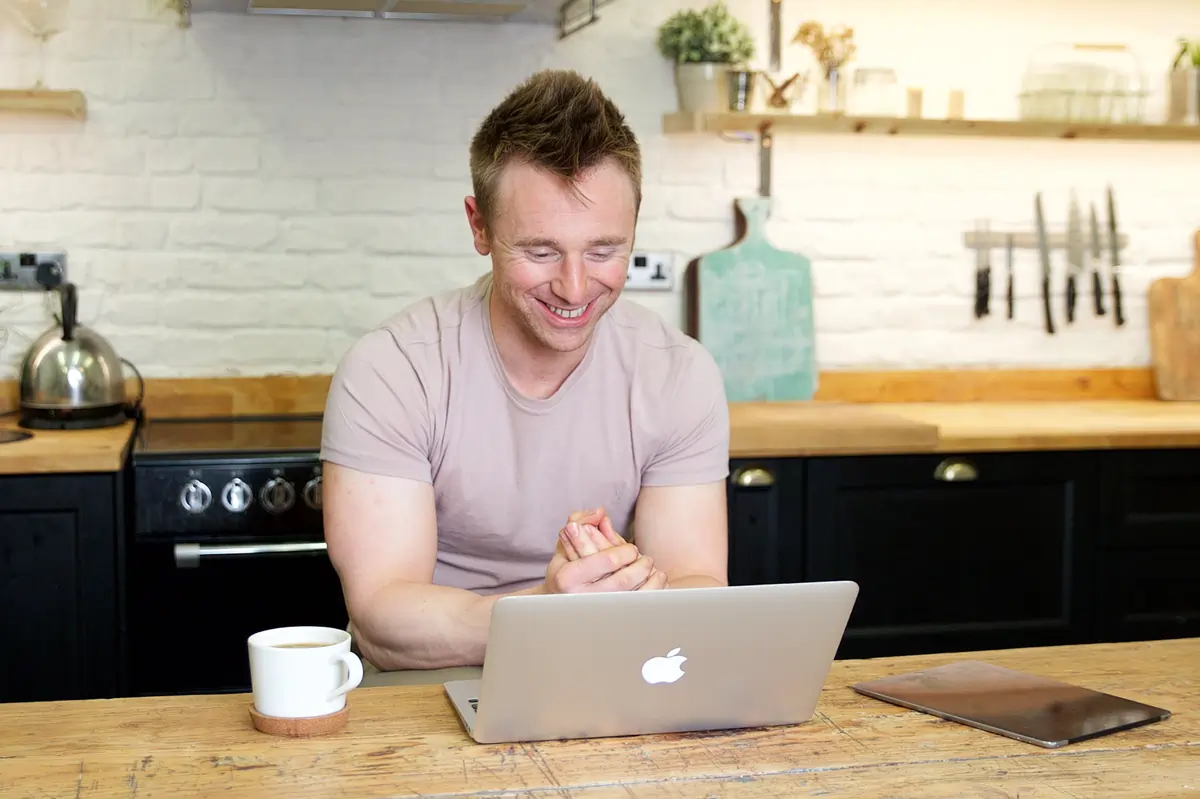
A personalised fitness plan backed by my proven 'Healthy Ambition' methodology

The methodology combines my academic background in psychology with over a decade of hands-on experience working with everyone from corporate executives to high-profile clients across film and entertainment.
Through thousands of hours of coaching, both in person and online, I’ve identified the specific, recurring and predictable challenges that plague busy professionals. These challenges span more than just exercise selection, training splits, or time constraints. The real barriers are internal ones that mainstream programs completely ignore or even encourage.
Who this is and isn't for:
This program is designed for those who already have fundamental exercise habits established but aren't seeing the results they expect from their effort. It offers a shift from guesswork to strategy. If you're still building initial consistency with exercise, a different coaching format, like local in-person training may offer a better foundation before transitioning to this level of customisation.
If you're already exercising but neither the mirror nor your metrics show it, you're in the right place. I'll help you move beyond one-size-fits-all fitness programs, taking exercise and nutrition decisions off your plate with a personalised plan.
No hype, theatrics or shortcuts.
You’re not hiring a drill sergeant, you’re partnering with a strategist. Think of this as fitness consultancy. A personalised blueprint built to deliver measurable results without wasted time, guesswork or friction. I’ll design the strategy so that you can execute with confidence, and together we’ll adapt around schedule changes and competing priorities.
The 12-week format gives us the optimal timeframe for clear physical results, improved energy and the start of sustainable behaviour change. At the end, we’ll create a clear roadmap for your next stage, whether it’s transitioning to self-directed maintenance or continuing with personalised coaching.
At the end of 12-weeks you'll:
- Know exactly what drives progress (and how to repeat it)
- Feel stronger, fitter and noticeably more energised (without overtraining)
- Have a sustainable fitness system (Integrating exercise, nutrition and lifestyle habits)
- Transcend willpower and short-term tactics (30-day challenges, restrictive detoxes, or 'dry January' style resets)
What's included and what it costs:
- Custom Training Plans (that slot into any schedule, no matter how chaotic or prone to change)
- Nutrition Guidance (geared toward positive body composition change, not fad dieting)
- High level 1:1 accountability (without needing to sync diaries with your trainer)
Program Fee:
£456
15% discounted upfont payment
3 x Monthly payment option available
Next available start date:
21st July 2025: 3/5 spaces available.
Ready to see if this is the right fit for you?
Please request a consultation to discuss your goals
Ever feel like the effort you put into working out isn't paying off?
You exercise fairly consistently. Sure, travel or socialising sometimes derail your best intentions, but for the most part, you’re active. You eat well, the majority of the time. You could lace up and run 10k on any given weekend, and you’ve completed bigger events in the past. Fitness isn’t foreign to you.
But despite all that effort, your body doesn’t really show it. You’re technically fit, yet not fully comfortable in your own skin.
And when you do try to finally chase down your fitness goals, you burn out. You push workouts to the point of fatigue or injury, and diet down to the extent that you’re tired, hungry, and irritable, all of which ironically lead to eating extra meals you hadn’t planned and reaching for all the wrong things to help soothe emotional stress.
It’s like the harder you try, the worse the return gets, and over time, that would chip away at anyone’s confidence.
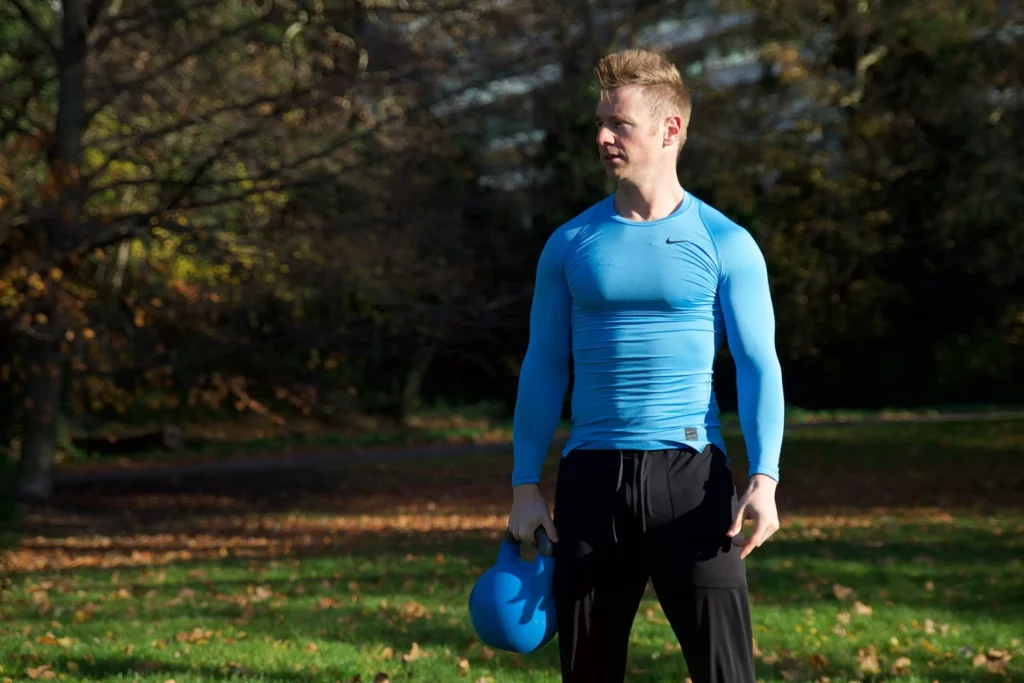
So you feel stuck, not necessarily in crisis, but definitely not where you feel you should be, given how much effort you’re putting in.
Over time, even the most driven individuals lose momentum in the face of poor results. Not because they lack discipline, but because they never got the return they deserved. This can lead to periods of inactivity, low motivation and a disconnect from health & fitness, that would never have happened if the results had been better.
When you return to try again, you’re already doubting yourself. Not because you can’t do it, but because you’ve seen the cycle before.
And if you’re like many of the professionals I work with, you’ve felt this way for a while now.
Does any of this sound familiar?
- Do you feel like the harder you push, the faster you burn out. Physically and mentally?
- Do you feel guilty about taking rest days, or even taking a lighter training session when tired?
- No matter what program you follow, do you always feel the urge to “take it up a notch?”
- Are you constantly trying to train more, eat less or go harder to force faster results?
- Despite success elsewhere, does your relationship with fitness still feel reactive, inconsistent & quietly disappointing?
- Is it affecting your confidence, not dramatically, but enough that it stops you being spontaneous?
If so, it’s not a lack of discipline that’s holding you back. It’s a flawed framework that rewards depletion over development and confuses effort with effectiveness. Don’t worry, it’s a common trap for high performers and with the right program, it’s easily overcome.
You’ve learned through success elsewhere to redline. Your work ethic allows you to tolerate more discomfort than most, and that’s served you well in your business career, but in fitness, that mindset doesn’t scale.
It just creates a loop of all-or-nothing cycles that are:
Never bad enough to completely give up
Yet, never stable enough to deliver lasting results
Leaving you in no man’s land. You’re not inactive, at least not for long periods, but you’re never really performing at your best either. I built this online personal training program to solve that problem for good.
Why Most fitness programs fail busy professionals
(and what actually works)
The problem isn’t you, it’s not even other programs, it’s all about context
You’ve likely tried other fitness programs before. And while many are technically sound, most were built by and for fitness influencers, bodybuilders, and celebrities. In other words, people who get paid to work out. Not people trying to fit exercise around 60-hour work weeks, client meetings, or business travel.
Yes, those programs work for them. But they require an amount of free time, control, and recovery that just aren’t realistic for high-performing professionals with busy schedules. It’s not that you couldn’t stomach those programs; you probably could. But they were built for people who can treat exercise like a full-time job. You have other priorities.
The consequences of misaligned strategies
My clients are building companies, leading teams and chasing ambitious goals. They’re juggling deadlines, managing stress and adapting to constant change. In a world where rigid cookie-cutter plans built for someone else just don’t hold up. That’s why I built this program.
Your time and energy are your most valuable resources. You can’t afford to waste them on inefficient workouts, unsustainable routines, or training plans that collapse the moment life gets busy.
We all hold ourselves to certain standards, which are the foundation of our identity. So when what we see in the mirror, and how our clothes fit, no longer reflect those standards, it creates an internal tension. Over time, you stop feeling like yourself. You’re no longer fully comfortable in our own skin. Especially when you’re excelling professionally. But unlike your professional life, this is a problem you can simply outwork or push through. You can’t red-line your way to sustainable results.
The psychology of ambition, and how it backfires
Ambition is an asset, but left unrestrained, it can erode your health. Restrictive diets, overtraining, and failed attempts don’t just waste time, they directly contribute to burnout. The right fitness plan should reverse that trend. This program is designed for maximal impact on your body composition, baseline energy, and resilience to stress. Once we’ve rebuilt that foundation, we can layer in performance goals, not the other way around.
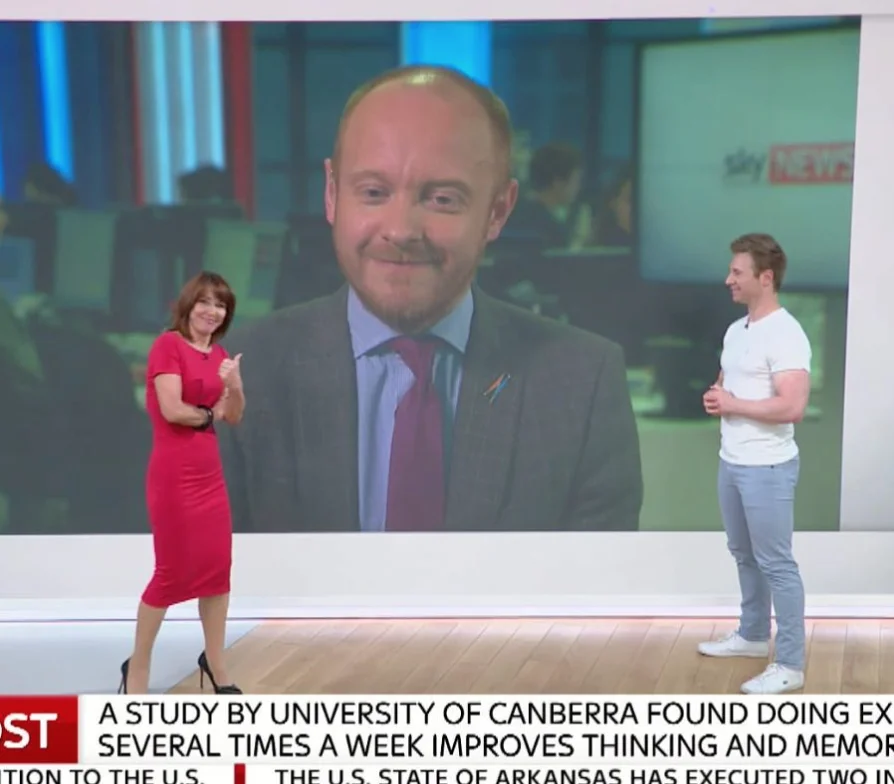
The solution: A fitness plan that adapts to busy lives
You already make a hundred decisions a day. The last thing you need is to waste mental energy choosing between cardio or weights or wondering what to eat. You need a proven, personalised fitness plan that cuts through the noise, removes all guesswork, and puts you back in control.
In my 14 years as a personal trainer, I’ve worked with Oscar-winning actors, European royalty, CEOS of blue-chip companies, athletes, and entrepreneurs. All have faced similar challenges, the through-line is that motivation usually isn’t the issue; it’s momentum.
High performers are wired to push harder no matter what. And while that instinct may have served you in business, it can sabotage your health & fitness progress. It leads to overtraining, burnout, and quitting the moment life interrupts your perfect streak.
That’s why I’ve built a 12-week online personal training program that works with your high standards, not against them. It transforms health & fitness from a source of stress into a strategic advantage. Offering better energy, stronger performance and a body that reflects the standards you hold yourself to.
Your ability to execute on a strategy is your competitive edge. I’ll help you get a better return on your effort with a plan that’s built for your life, not someone else’s.
Ultimately, previous plans haven’t failed because they were fundamentally flawed, or because you didn’t work hard enough at them, the deck was always stacked, because they were built for someone else.
Let's begin with a strategy call, not a sales pitch
(no closers)
I’ll help you identify key barriers to progress, explain how my program works, and offer a personalised strategy.
Please Note: I work with a limited number of clients at any one time to maintain a high level of individual attention. Requesting a consultation allows me to confirm a good fit and availability before we put another call on your calendar.
“If you want to get in shape fast, Scott Laidler offers a 12-week training plan – including a meal planner – to help. Tell Laidler your needs and he’ll design a program specifically for you. The meal plan details the exact macronutrients you need, taking the difficulties out of diet ”
“Clients sign up for personal training and nutritional programmes tailored to their individual needs from a man who has trained everyone from athletes to Oscar-winning actors”
Let's compare what most fitness programs focus on...
Versus what actually works when you’re balancing performance at work and in life
- One-size-fits-all plans: Programs that focus on the coach or method, not you. Generic templates offer little consideration for your lifestyle or work demands, so as your circumstances change misalignment becomes inevitable.
- Short-term outcomes: Photoshoots, fitness challenges & distance races can be fun ways to test yourself, but if they aren't built on a foundation of permanent habits, they'll work for a couple of months at best before unravelling, just like a restrictive diet.
- Unnecessarily high training load: Most fitness programs get their training cues from sports & bodybuilding. I.e. out-of-context expectations for a professional managing a career, business, family and frequent travel.
- Rigid dietary rules: Demonising foods and banning indulgence isn’t discipline, it’s dogma. For lasting change you'll need flexible frameworks, not patronising restrictions.
- Influencer-led advice: Flashy exercises, over-engineered morning routines and trending diets may seem enticing, but are they evidence-based and sustainable? Especially for those not living the curated lifestyle of a content creator.
- No context, no cohesion: Just workouts in isolation. Many plans turn a blind eye on factors like nutrition, stress, sleep, & recovery, because they are moving parts that don't scale
The Key: Personalised fitness plan
Your fitness program is built around your goals and your calendar. No Templates. It's a custom fitness strategy designed to fit your life.
- Long-term behaviour change: Getting a return in fitness isn’t about willpower. It’s about systems. We build consistency, then bolt on performance goals like distance races and events later. When life shifts, your foundation stays intact.
- Minimum effective training load: You don’t need more time; you need more efficient workouts. We plan just enough to stimulate progress, but wrap up before reaching the point of diminishing returns.
- Food for fuel & recovery: Nutrition isn’t punishment. It’s strategy. We treat food as a tool to improve body composition, energy levels and cognition, and ultimately to practice self-care. Not as a way to manipulate weight.
- Mastery over novelty: We focus on principles, not gimmicks. Simplicity and repetition build habits that survive deadlines, travel and real-world application.
- Integrated lifestyle coaching: Exercise is only one piece of the healthy lifestyle puzzle. We factor in sleep, stress, movement, mindset and recovery. Everything connects; you’ll never achieve your fitness goals operating at the level of exercise alone.
Digital fitness coaching delivers a return on
day one
How personalised online fitness coaching delivers structure, progress and energy, starting immediately.
Never experience guesswork again
Every workout is tailored to your goals and time constraints, with clear instructions and contingency options built in. You’ll always know what to do, even if your available time to exercise or access to equipment changes.
Your plan adapts to your schedule, not the other way around
Whether it’s business travel, back-to-back meetings or just a week that doesn’t go to plan, your fitness strategy adjusts in real time. No need to pause or wait for perfect conditions. Remote coaching keeps you progressing, even when life gets chaotic.
You'll achieve results without disrupting your workday
Get results with three 30-minute workouts per week or express options when you’re time pressed. In fact, Research shows meaningful training adaptations can take place in as little as 10 minutes or less. Your workout plan will be built on strategic, minimum effective load training, while avoiding burnout and wasted time.
You’ll establish a consistent exercise habit that compounds over time
This isn’t about short-term intensity. It’s a system designed to help you build sustainable habits that outlast willpower, so exercise and healthy eating stay consistent through stressful periods, travel demands, and setbacks.
You’ll have a clear personalised strategy, not conflicting advice
No more bouncing between influencers, trends and preset workout apps. You’ll have one evidence-based system with a straight line of contact to an experienced personal trainer.
You’ll have a training system that delivers, even when you're only able to follow it 80% of the time
The methodology in your plan is tested and intended for the real life of busy people, not the perfect weeks of a full-time athlete. It delivers whether you’re thriving or barely holding your week together.
Train hard recover harder
Most ambitious professionals push hard and pride themselves on it. But over-training and under-recovering don’t build resilience. They break it. So we balance load, rest and stress to help you perform at a high level without compromising your long-term health. Because in the end, a workout is only as good as your ability to recover from it.
“Thanks Scott! Back into a really good groove the last few weeks and feeing great 👍 energy levels are great, quality of sleep is great, and continue to see improvements with lifts, and physical changes. All really great stuff! Thanks for the continued support!”
– Kevin, USA
My proven online coaching process
How we predictably achieve sustainable results
It starts with a strategic consultation
This is a strategy session, not a sales call. We’ll speak 1:1 to understand your training history, goals, and scheduling realities. Enabling your plan to start with clarity rather than guesswork.
Comprehensive onboarding process
Once you’re onboard, we’ll use a structured intake process to refine your strategy. Every part of your plan is tailored to your physiology, lifestyle, and training history.
Custom fitness plan built for you
Your exercise program is tailored to your lifestyle, equipment, experience level, and even recovery bandwidth. When it’s built to your reality, not a template, you’ll see better results and sustain them.
We build early wins into the plan
Your first few weeks focus on high-ROI changes for your body and lifestyle. We maximise contrast to what’s gone before for swift adaptation. This creates momentum fast while setting up long-term progress.
Simplicity that lasts
This program focuses on the repetition of the fundamental habits that will put you in long-term control of your health & fitness, so you can stay consistently in shape year-round, without needing to rely on willpower. We master the basics first, then layer in complexity over time.
We plan for real life
We build for real life. Your plan includes fallback sessions, stress-adjusted phases and backup routines. So you can stay consistent even when life gets chaotic, as it often does for busy professionals.
Your 12-week online personal training roadmap
Expected results timeline & syllabus
This programme is intentionally structured over 12 weeks because that timeframe aligns with both human biology and behaviour science.
It’s long enough to drive real physiological adaptation and create sustainable behaviour change, but still short enough to maintain sharp focus and momentum throughout.
In the first month, your body experiences what I call the “contrast effect”, a powerful adaptation window where the dramatic change from your previous routine (or lack of) triggers rapid improvements.
You’ll feel neural and cardiovascular “wake-up” responses, which will offer enhanced energy, sharper coordination, and greater movement efficiency. This is the stage where your effort feels like it’s paying off quickly, and it will be.
By weeks 5–8, visual changes start to show. This is when we typically see measurable improvements in strength, muscle gain, and fat oxidation. It’s also the stage when other people begin to notice, so it’s probably about the time when you’ll start to get some compliments. These results aren’t just encouraging, they’re beginning to reinforce the habits we’re setting up.
In the final four weeks, the physical progress continues, but the deeper win is a psychological one. At this point, you’ll have surpassed the 9-week threshold that research associates with behavioural automaticity reaching its peak. Studies show that habit formation typically occurs at around 66 days. Meaning fitness is no longer something you’re “trying” to do; it’s become a part of who you are.
Throughout, your program is custom-built around your schedule, equipment access, and preferences. While the specific workouts are tailored during your onboarding consultation, the framework that underpins them remains consistent and grounded in exercise science. I’ve been developing and refining this methodology since 2015, and it’s now tested across hundreds of client cases, many of whom have maintained their habits many years after completing the program.
What follows is your expected results roadmap, so you can track, anticipate, and maximise every stage of your transformation:
Phase 1 | Weeks 1-4 | Foundation
Phase 1 Overview
The first phase of the program is where we set the foundations of a sustainable health & fitness practice.
It’s where we’ll benefit from the greatest degree of contrast to what’s gone before and where results will be achieved at the fastest pace.
You can expect the following results in this 4-week training phase:
- Rapid strength gains are achieved through neural adaptation. In the early weeks, your nervous system becomes more efficient at recruiting muscle fibres. This results in immediate improvements in performance, even prior to visually noticeable muscle growth.
- Setting the foundations for a regular mobility practice helps to restore lost range of movement, improve posture, and this efficiency will carry over to both your workout performances and an uptick in ease in your everyday tasks.
- Consistent exercise boosts both energy and mood by enhancing mitochondrial efficiency and endorphin release. In these early weeks, most of my clients report sharper focus, improved sleep and greater mental resilience, typically within the first 7-10 days.
- Early habit formation begins to build confidence and personal agency. Knowing exactly what to do in your workouts and what to eat for your fitness goals helps build trust in your ability to follow through and integrate health & fitness into your busy life
Essentially, in phase 1, we’re proving how doable this is going to be when you have a well-crafted program.
Rapid Strength Boost
In the early weeks of your program, one of the most obvious changes you’ll feel will be a significant increase in strength. Not because your muscles have grown drastically just yet, but because your central nervous system will become far more efficient.
This process is known as neural adaptation and involves remapping how your body recruits and coordinates muscle fibres. Offering both better inter-and intra-muscular control. This enhanced neuromuscular efficiency allows you to lift heavier weights with the same level of muscle mass; it’s akin to taking a sports car in for a tune-up. The same engine delivers more output simply because its internal systems have been organised in a way that gets them working harmoniously.
This can feel a little startling, because even session to session, you can see notable improvements, especially if you don’t have a background in strength training. It’s a case of tapping into a level of strength you technically always had, but just weren’t capable of expressing because your brain had not yet learned to coordinate your muscles to use it effectively.
These gains are also psychological. Experiencing strength gains of this nature helps boost confidence, which reinforces consistency. It’s a great demonstration of progressive overload, which will be a long-term key to success in your health and fitness journey.
It’s here that many people realise that repetition stops being boring when it delivers results. Repetition becomes a prerequisite for success, because it’s only by comparing performances along controlled variables that you can demonstrate and attribute progress.
This is a key understanding, and keeps the program intentional. Because it’s the basis of strategic physiological progression and the foundation on which predictable results are built, that’s why so many people plateau using fitness apps, bootcamps and fitness classes. They deliver on effort, but without any cohesion. So you sweat, you burn calories, but it’s all a little uncoordinated.
This phase is about replacing that randomness with strategy whilst laying down a foundation that turns physical effort into long-term, measurable results.
Mobility Improvements
Modern life, especially for professionals spending long hours sitting at desks, gradually diminishes our natural joint mobility. It doesn’t happen overnight, but over the years, our bodies begin to adapt to restricted movement patterns, losing range of motion unless we actively intervene.
That’s why, in the first few weeks of your 12-week online personal training program, we focus heavily on restoring joint mobility and improving movement quality.
We do approach this through structured dynamic warm-ups and targeted mobility drills. These will help us begin to counteract the postural limitations caused by sedentary routines like desk work, driving, and long commutes. This isn’t flexibility training to tick off a productivity checklist. It’s a strategic approach to restoring functional movement, improving posture, and enhancing neuromuscular control.
A 2024 systematic review found that Better mobility directly translates to improved training performance, with 20 of 22 studies showing mobility benefitted sports performance. Many of my clients experience smoother running mechanics, stronger lifts, and faster recovery simply by addressing joint restrictions and restoring flexibility, particularly in common problem areas like hips, shoulders, and hamstrings.
These improvements in mobility also help to reduce the likelihood of training-related setbacks. So if you’ve ever avoided certain exercises due to discomfort, you may benefit more than you’d expect from something as simple as a 10-minute mobility routine. It can be surprising that such a low time investment can significantly expand your options and improve your confidence to do the movements necessary in your everyday life.
You’ll move better, train more effectively, and experience less friction in your workouts. While most people enter fitness focused on weight loss, fat burning or muscle gain, my most common client feedback is how transformative it feels to move freely again.
Energy & Mood Elevation
Even moderate periods of consistency are enough to trigger powerful internal shifts in the way you think and feel. That’s not a wishy washy statement, I mean it technically, when you begin to move more often, mitochondrial enzyme activity increases, improving how efficiently your cells produce energy. You’ll feel this as noticeably improved daytime energy, reduced fatigue, and sharper cognitive performance. The majority of my coaching clients report feeling this within the first week of the program.
It’s one of the great ironies in fitness that by using energy to exercise, when well calibrated, you actually net greater energy levels
This is because the human body is a natural system, governed by the principle of ‘anti-fragility’ i.e it doesn’t crumble under stress, it gets stronger and more efficient as a result of being exposed to what we call the hormetic effects of stress, but here’s the key, exercise only qualifies if that stress (training load & intensity) is calibrated well enough for full recovery. Because it’s at rest where adaptation actually takes place, not during the workout itself.
This is the big health & fitness banana skin for high performers, because they are the most likely to overdo or skip it entirely when life gets stressful. They push past the point of diminishing returns because more output has generally served them in other areas of life, or skip out on their fitness routine because they are so used to being perfect that ad-hoc compliance feels demotivating.
The problem is that dropping exercise during rough periods is like digging up the foundations supporting your house. It’s the route of least resistance in the short term, but it undermines the structure that would otherwise have supported resilience.
At the same time, physical activity stimulates the release of endorphins, dopamine and serotonin, which are your body’s natural mood elevators. Which many describe as a sense of improved mental clarity, emotional stability and focus.
This early ‘feel better dividend’ plays a crucial role in building momentum. While visible changes take a few weeks to manifest, this internal upgrade arrives quickly and can be the turning point to making exercise a consistent habit
For busy professionals, this is one of the pleasant surprises of online personal training: you’re not just working toward long-term body transformation, you’re reclaiming your vitality, and with it, mental bandwidth to perform better in every other area of your life.
Habit Setup + Confidence Boost
In the first phase of the training program, we’re not just building physical strength. We’re laying down the neurological and psychological wiring that makes fitness stick.
By logging at least 12 structured workouts in this phase (based on our ideal minimum of exercising three times per week) you’ll cross what I’ve found to be a critical repetition threshold, through which exercise feels less like a chore or a box on your to-do list, and more like a normal part of your everyday life.
This can be achieved using event-based cues, e.g “before bed I do my mobility” or “after the school run, I get a walk in” Behavioural psychology shows us the correct use of event intentions is far more effective than relying on motivation alone for goal achievement.
The real power here, though, is that early consistency builds confidence. You start to feel good about your ability to follow through on your intentions and deliver on the commitments you’ve made to yourself. It’s setting up the stage for you not just to be physically in shape by the end of the program, but someone who trains, full stop.
You’ll also be observing how doable everything seems, which encourages long-term self-efficacy. It’s by the end of phase 1 that you’re starting to see that you really could be consistent year-round with this kind of flexibility, making you feel in control.
Phase 2 | Weeks 5-8 | Momentum
Phase 2 Overview
The second phase of the program is where we begin to capitalise on the framework that’s been laid in previous weeks, and the visible changes in the program start to become apparent.
Here’s what you can expect by the halfway mark of the program:
- The muscle growth you saw in phase one accelerates through a combination of progressive overload and improved neuromuscular efficiency, leading to visible size and strength gains that’ll start getting noticed.
- Body composition shifts to unveil a leaner physique. Achieved through the simultaneous loss of body fat and muscle hypertrophy. We do through through a recomposition approach, no restrictive dieting or polarised swings of ‘bulking’ and ‘cutting’
- Cardiovascular fitness peaks through the combination of what I call ‘cardio bookends’: Frequent light steady-state cardio and occasional short bursts of HIIT, improving VO₂ max, endurance, and metabolic flexibility.
- Intrinsic motivation kicks in, which starts to make the program feel more natural and self-reinforcing. Further increasing your confidence that you’ll be able to maintain your results long-term.
Muscle & Strength Gains
In phase 2 of your online fitness coaching plan, the groundwork we laid in phase 1 begins to visibly and tangibly pay dividends.
By now, your movement patterns are more efficient, your nervous system is firing more optimally, and your exercise technique is locked in. All of which means you’re finally in a position to extract the full benefit of every rep and set.
At this stage, we slightly shift focus and seek to benefit from both progressive overload (the systematic increase in training stimulus over time) and mechanical load (the actual force/tension applied to muscle during exercise), by both keeping coherence between strengh sessions and simply exposing the body to greater demand, given that we’re more confident with exercise form and our ability to recover from the demand.
So, compared to your early workout sessions, you’re not just moving better, you’re moving a lot more weight.
This systematic progression encourages muscle fibres to begin to enlarge, and connective tissue to strengthen. It’s reasonable to expect that major compound lifts will see an increase in weight of about 10-20% through this phase of the program
A result of:
- Nural efficiency (from phase 1)
- Technique refinement (better muscle control and recruitment)
- Improved intramuscular coordination (benefiting compound lifts)
- Hypertrophy contributing to force production (simply having more muscle fibre capable of producing force)
Many clients report seeing and feeling their muscles becoming visibly larger and feeling more dense. It’s when you start to see things like your shoulders taking shape, more toned, athletic-looking arms and your leg muscles starting to tighten up, it’s the start of the visible changes catching up with the work you’ve already done.
Crucially, we aren’t just spinning our wheels to chase a pump, we’re building functional muscle that helps improve your body composition, elevates your resting metabolic rate (the amount of calories you need in a day to maintain bodyweight), not to mention the process of strength training itself leading to adaptations in the HPA axis making the body more efficient at handling stress, which can help buffer the downstream effects of chronic cortisol elevation that those working long-hours are so susceptible to.
It’s an interesting point in your fitness journey because it’s simultaneously where you’ll experience the psychological validation that many of us crave from changing our body shape, which you should celebrate and lean into for momentum. But you’ll also be faced with the physical reality that any one training protocol (combination of exercise selection, sets, reps, cadence and volume) is destined to hit diminishing results at a certain point. And as much of the early progress is attributable to going from random effort to a structured plan, in phase three, we will be forced to introduce solutions to this problem, helping you avoid a major frustration in fitness: That early rates of progress can’t be maintained forever. Setting the stage for us to solve our next expected challenge, working through a plateau.
Visible Composition Change
You may not notice a huge amount of change on the scale at this stage, that’s by design because we’re protecting your metabolic health. What you’ll notice is a more defined silhouette, not only because you’ve added muscle, but because you’ve also lost fat.
This dual effect is what’s known as body recomposition. It’s reducing fat mass while simultaneously increasing lean mass. It’s a coveted outcome in health & fitness, and is possible because we’ve optimised your training and nutrition in a way that deliberately contrasts what’s gone before. It’s one of those situations where the more low-hanging fruit you have on the table coming into phase one, the greater recomposition results you stand to achieve by the end of phase 2.
This is the point in the training program where many of my clients report feeling a significant difference in how their clothes fit, in their posture and the confidence that comes along with that.
The big breakthrough here is in understanding that fat loss doesn’t require or even benefit from extreme calorie restriction, actually quite the opposite. By supporting muscle protein synthesis throughout strength training, and laying in other components of the program like steady state cardio, stress modulation, and often a gentle time-restricted eating practice, we create multiple new ‘vectors’ for fat oxidation without the need for aggressive dieting. This nuance is not to be underestimated; it means you now have multiple ways to encourage fat loss without directly having to manipulate that old formula of calories in vs out.
You could liken it to heating a room. If you only looked at surface-level solutions, you might assume the only way to stay warm was to burn more wood. But what if you controlled the airflow to burn the fuel more efficiently, insulated the room, added thicker curtains, and sealed the windows? You’d dramatically improve heat retention, without actually burning any extra fuel.
That’s exactly what we’re doing with this program. Creating a more metabolically efficient environment. By building muscle, improving fat oxidation, and reducing internal stress, we set the stage for fat loss without relying on extreme calorie cuts.
In fact, those on the program regularly express their surprise at eating more than ever, yet looking leaner, firmer and more athletic. This is all part of the mindset shift this program offers, especially for those who’ve spent years pursuing weight loss as their primary metric, it’s a massive upgrade in understanding because with a recomposition lens of your training you work toward gradually improving body composition with it improves metabolism, confidence and energy levels and that offers a sense that what you’re doing is actually sustainable.
The key takeaway here is that there is never any utility in losing muscle on the scale; it doesn’t help aesthetically, metabolically, or with your performance. Accepting weight loss advice or interventions that don’t distinguish between muscle and fat lost on the scale is like welcoming the gift of a Trojan horse.
Cardiovascular improvement & Metabolic Upgrade
At this point in your online fitness coaching journey, your cardiovascular fitness improves significantly, both in terms of how you feel performing everyday tasks and how your body functions under the training load. At this point, you’ll be accustomed to your light 30-40 minute steady state cardio sessions, while we’re now tuning up your short bursts of high-intensity interval training (HIIT) to access your higher rates of exertion. This strategic combination of workouts, I refer to as ‘cardio bookends’, it’s a combination that boosts mitochondrial density and upgrades your body’s ability to extract and utilise oxygen, helping you burn fat more efficiently both during structured exercise and in general activity.
What that will tangibly mean is:
- Faster run times
- Quicker recovery between sets
- Notably lower resting heart rate
These aren’t just fitness metrics; they’re health markers and evidence that your cardiovascular system is becoming more efficient and resilient.
Perhaps the most under-appreciated benefit of this part of the training program is a shift in metabolic flexibility. Which is your body’s ability to switch seamlessly between carbohydrate and fat as a fuel source.
Many people, especially those who have followed restrictive diets in the past, could be considered ‘metabolically brittle’, relying heavily on sugar for energy and crashing when it’s not available, it’s the classic mid-afternoon slump scenario. This metabolic adaptation is huge for you moving forward, it gives you better and more sustained performance whilst making you more resilient to the typical everyday fluctuations of hunger. This releases you from the oppression of rigid meal times. Your body becomes better able to rely on its energy reserves when logistics aren’t perfect, which, let’s be honest, is very common for busy professionals.
More Intrinsic Drive
By week 5-8 of your workout program, something powerful starts to happen psychologically. Your workouts start to feel less like an obligation and more like a natural expression of who you are.
This is intentional. At around the 66-day mark, most clients pass the critical repetition threshold that behaviour psychologists associate with habitual automation; in other words, exercise and healthy eating become habits. It’s easy to say, but think about it, it means that by getting to this stage, you’re entering the realm of behaviour where you no longer need conscious negotiation, willpower or external motivation.
That shift from extrinsic motivation (putting yourself through exercise in order to hit a goal, meet an external reward or to relieve pressure) to intrinsic motivation (working out and eating in a healthy way because it makes you feel good, aligns with your identity, and delivers internal validation) is one of the most powerful levers for long-term consistency.
At this point in the program, you’ll likely notice:
- A stronger sense of personal agency: “I’ve proven I can stick at this”.
- Less reliance on willpower, motivation or mechanical reminders to workout
- A positive feedback loop in which staying with the program gives you back more energy than it costs, physically and mentally
Many of my digital personal training clients reflect on this part of the program as a tipping point. After which, fitness stops being effortful and starts to feel more natural, even essential. You’re no longer wrestling your schedule or your mindset each week, you’re carving out time for what has become a set of non-negotiables that you link to feeling and performing at your best.
Phase 3 | Weeks 9-12 | Transformation
Phase 3 Overview
In the final four weeks of your 12-week program, the results have become undeniable, physically, psychologically and behaviourally.
Crucially, this final phase of the program cements your fitness results inside and out. You’ll come to realise the real transformation was never just physical, it was about reshaping how you think about fitness, integrating it into your life and perhaps most powerfully, how you relate to yourself.
Here are the overall outcomes by the end of the program
- You’ll know how to cycle and modify your workouts based on goals, stress and time constraints.
- You’ll feel in control of your body composition without obsessing over the numbers or the scale
- You’ll have built habits that stick and be able to self-correct when life inevitably gets in the way.
- You’ll be able to spot early signs of burnout, plateau or overtraining and respond with clarity, compassion, and confidence.
- You’ll have steadily expanded your training capacity and have a clear plan to keep you progressing without chasing perfection.
Peak Strength & Performance
Phase three of the training program is where everything comes together. After eight weeks of consistent training, progressive overload and better nutrition intake, you now have both the neuromuscular coordination and the muscle mass to unlock your full performance potential.
By this stage in your online fitness transformation plan, you’ll be approaching your workouts with noticeable confidence and precision. Whether that’s moving heavier weights than you ever have before, hitting PBs or breezing through intensive circuits you’d once have found intimidating.
This final phase of the program is designed to help you explore your new performance ceiling in safety.
Strength gains of 20-30% over your week 1 baseline are not uncommon, driven by the convergence of:
- Neural efficiency (your nervous system firing far more efficiently)
- Muscle fibre hypertrophy (more contractile tissue capable of producing force)
- Better intra-muscular coordination (muscles working together, not against one another)
Beyond lifting performance, you’ll likely see personal bests in your running and cycling times too. It’s tangible proof that you’ve built a stronger, faster and more capable body.
Anecdotally, by this point in the program, many of my clients tell me they are operating at a level they haven’t felt capable of in years, if ever. It’s all the result of training, nutrition and recovery working in tandem as an interrelated system.
Accelerated Fat Loss
As we near the conclusion of your 12-week body transformation program, we’re not introducing a new fat-loss tactic in a last-minute bid to accelerate progress. Instead, we’re cashing in on he previous 8 weeks of precise physiological groundwork.
Let’s review what’s occurred that sets you up for excellent continued fat loss:
- You’ve increased mitochondrial density, meaning at the cellular level, you are better equipped to oxidise fat
- Your aerobic base has expanded, enabling sustained fat metabolism during steady-state cardio
- Your metabolic flexibility has improved, allowing you to switch smoothly between carbs and fat as a source of fuel, rather than relying exclusively on quick burning sugars.
And most importantly, because we haven’t crash dieted our way here or heavily restricted calories, we’ve protected your existing lean muscle mass, and as such, you’re metabolism. So you arrive poised at the finish line of the workout plan with everything switched on, rather than suppressed, a stark contrast to most mainstream fitness programs that get less and less tolerable as the weeks roll on.
So now, with intensity peaking and your dietary intake fine-tuned to match your energy demands, you can achieve the sharpest drop in body fat percentage of the entire program, without the need to drop your caloric intake, your ratios have always been perfect, now your conditioning is allowing the methodology to shine.
This is where your visual progress is undeniable. More importantly, it’s sustainable because even at this late stage in the program, there still isn’t anything that couldn’t be sustained year-round, or returned to after a short break. You’re in the perfect position to get more fat loss as a return on your effort, even if you chose to repeat the program and revisit the same workouts we started with. Because you would be showing up differently, your body is fundamentally more efficient at burning fat because we haven’t just chased lost weight on a scale, we took the time to rewire your physiology to make fat loss a natural outcome of your lifetsyle ad surrounding habits.
You know how in life, there are some things you can’t unsee, or unknow? This program is that in the fitness context. You’ll never entertain a two-dimensional weight loss program. Because now you’ll understand that the very idea of weight loss by any means is a flawed goal. By avoiding short-term fixes, you may have spared significant metabolic disruption and laid the foundation for wellness habits you’ll maintain for the rest of your life.
Automaticity + Identity Shift
By weeks 9-12 of your remote coaching program, a deeper shift begins to take place, not one observable in the mirror, but rather when you reflect on your internal self-talk.
By now, taking action on the program is less about mechanical consistency in order to stay in sync with a calendar; at this point, we’ve achieved an identity change.
According to James Clear’s identity-based habits model and research from Stanford behavioural scientist BJ Fogg, long-term behaviour change sticks when it isn’t externally motivated, but when it aligns with your self-image. In other words, once you’ve made this shift, you don’t stay consistent because you want to hit a goal, you stay consistent because the behaviour now reflects who you are.
That shift from task-based motivation to identity-based action is the single most important development in the program, and why I believe developing the right mindset around fitness is such a powerful vehicle for personal development.
By this point, you’ll have logged a minimum of 28 structured workouts, assuming we’re operating at the 80% compliance rate I recommend to achieve results.
You’ll also have surpassed the 66-day threshold widely cited in the literature on habit automaticity, and repeatedly, and repeatedly have made nutrition and training decisions that reinforce your new fitness identity, as a result:
- Meal prep becomes automatic, not effortful.
- Training becomes self-reinforcing, not a drain on willpower
- Confidence rises, not just from physical results, but because you’ve kept the promises you made yourself.
You’re actually now supported by what we could consider both positive and negative psychological mechanisms:
Self-determination theory explains that intrinsic motivation becomes dominant once autonomy and mastery have been established.
Cognitive Dissonance theory shows us that once someone identifies as a ‘regular exerciser’ or ‘fit person’ actions that contradict that identity (like skipping workouts, comfort eating, not drinking enough water etc) create discomfort, which leads us to reject them to in order to stay consistent with the more positive identity.
This is where real lasting lifestyle change happens, and why we’ve avoided hacks, gimmicks and short-term validation. This whole time, in the background, we’ve been building a new self-concept that cannot be dismissed, because you’ve got a track record that confirms it.
Future-Proof System
At the end of the program, you’ll have achieved something a lot more substantial than completing a 12-week exercise program. You’ll have established a framework around your health & fitness efforts that you can maintain for the rest of your life.
I don’t mean workout for workout on repeat forever, that was never the point. This won’t have been a fixed plan; it’ll have been a strategic rehearsal for real life, under the support of an experienced personal trainer.
Over the three months, you’ll have trained through travel requirements, social events and demanding work weeks. You’ll no doubt have encountered challenges and setbacks.
You’ll have learned how to adjust and keep moving forward, helping to avoid being demotivated when things don’t line up perfectly. All of which means you’ll now be well practised in modifying intensity, shifting modalities, and making on-the-fly meal decisions all based on first-principle thinking. In my view, the true measure of the efficacy of any transformative fitness program is revealed by the quality of the decisions one makes immediately after completing it.
Here’s a truth that’s often overlooked: Your body isn’t a computer game, and fitness doesn’t work like academic study. There are now final levels or end screens, and you’re not entitled to continued benefit because you achieved a great run of form once in your life. On the contrary, our biology is subject to entropy, which means every physiological system we’ve been working on, whether muscular, metabolic, cardiovascular, endocrine, will deteriorate if neglected, but can also and continue to improve way beyond the end of the program if healthy habits are maintained.
What you’ll have achieved in 12 weeks is really just the first chapter. For many, it’ll have been the first time they’ve ever approached fitness in a sustainable way. What you can go on to achieve iin another 12 weeks or 12 years for that matter, is essentially unbound and now within your control.
In summary, you’ve moved from exercising to pursue a goal to operating with a system. That’s how results become sustainable, and more importantly, enjoyable.
This offers you a fantastic launchpad from which you can pursue shorter-term or performance-based goals like distance races, hyrox competitions, photoshoots or whatever you find interesting, because you’ll have a firmly established habit-set to fall back on. You’ll no longer be trying to build long-term habits on the pursuit of isolated short-term goals and achievements. From here on out, it should be the other way around.
What comes next:
If you would like structured support moving forward beyond the 12-week program, I offer two post-program coaching options:
Full Coaching – A seamless continuation of your transformation journey. Ongoing program design, high-touch accountability and personal adaptation.
Workout Planning + Support – Lower touch coaching with continued workout programming and access to expert input when needed. Perfect for those confident in their ability to implement a program independently, but who would value continued strategic progression.
Whichever path you choose, you now possess something most people never develop: A functional principle -based blueprint for lasting health & fitness.
Because fitness isn’t something you finish. It’s something you dance with over a lifetime.
Why I work with busy professionals
Success shouldn't come at the cost of your health
When you look closely at most mainstream fitness plans, their frequency, complexity and demands, you’d be forgiven for thinking they were designed for people with unlimited time and energy. By now, you’ve probably tried one or two and been exposed to what has become the standard approach. Let me guess, meal prep Sundays, obsessive tracking, resolutions, 30-day challenges, races or maybe you’re more into your fitness culture and find yourself flipping between gaining muscle, losing fat, 6-day training splits, all just to watch it fall apart the moment work demand grows. I know because I, too, lived this exact cycle for years.
In the early stage of my career as a personal trainer, I was frustrated with my own results. I spent thousands of hours studying the books, the literature and trawling bodybuilding forums for anecdotal insights, and eventually by my own standards, I cracked the code on getting myself dramatic results, for the first time in my life in my mid twenties I could get in what I considered great shape, of course it was pretty consuming, to be honest back then getting in that kind of shape was my sole focus, I wanted to make it in my field, so in a way my whole personality, ego and future was depending on it.
As a fitness coach, I synthesised everything I had learned, and when the will was there, on a long enough timeline, I could take someone from completely untrained to cover-model shape.
In fact, it worked so well that I ended up training Hollywood actors and writing for national newspapers. But there was a problem: the same system that built my career was slowly destroying my health.
I was working 17-hour days from 5 am to 10 pm, not just in a consistent gym, but bouncing between parks, client homes & offices. Eating on the roadside, heavily reliant on caffeine, and if my last client session was in a close enough part of London to my first the next day, I’d just sleep in my car. I was practising what I preached, until I wasn’t. It’s one of the ironies of personal training, when you begin your career you have all the time in the world to exercise, you peacock around the gym floor all day, but as soon as you reach a certain threshold of demand, you realise what it’s like not to have time to train, or plan meals and all of the sudden the equation changes.
Think of it, the more opportunities you pursue, the more ground you lose on how you’re supposed to show up as a fitness coach, imposter syndrome and concerns about a lack of authenticity are always in the back of your mind, at least they were mine. I was a kid from North West London, showing up in Hollywood, California, the epicentre of all things fitness, I’m supposed to be the example, but privately I felt like a contradiction.
Time went on, the years passed by, and I kept red-lining, eventually, through a myriad of circumstances, found myself essentially back at square one, ten years older and facing a harsh reality: the “all or nothing” approach that works in your twenties becomes unsustainable when you have real responsibilities.
It also highlights the reality that you can have a winning framework for getting in shape, but if it only works when all the stars align and can’t be maintained, it’s more of a party trick than a solution.
I developed my Healthy Ambition method on a different proposition. Instead of chasing that 100% peak condition that requires your entire life to revolve around fitness, I asked a different question: What if you could maintain 80% of that conditioning year-round while actually protecting your health and career performance?
I don’t see it as lowering standards, it’s about raising them. It’s about being strategic with time and effort, instead of just intense by default. I’ve found that a measured, holistic approach to wellness enhances performance at work. Once I’d reimagined my methodology, I was in better shape at 35 than I was at 25, with about a third of the training load.
Today, I live more like my clients than my contemporaries. I run a business where I have to travel for podcasts & events, whilst also work from home, and taking calls across international time zones. I face many of the same constraints and trade-offs as my clients when it comes to health & well-being. In response, I’ve developed a methodology and mindset that allow me to stay in shape, without sacrificing everything else that matters.
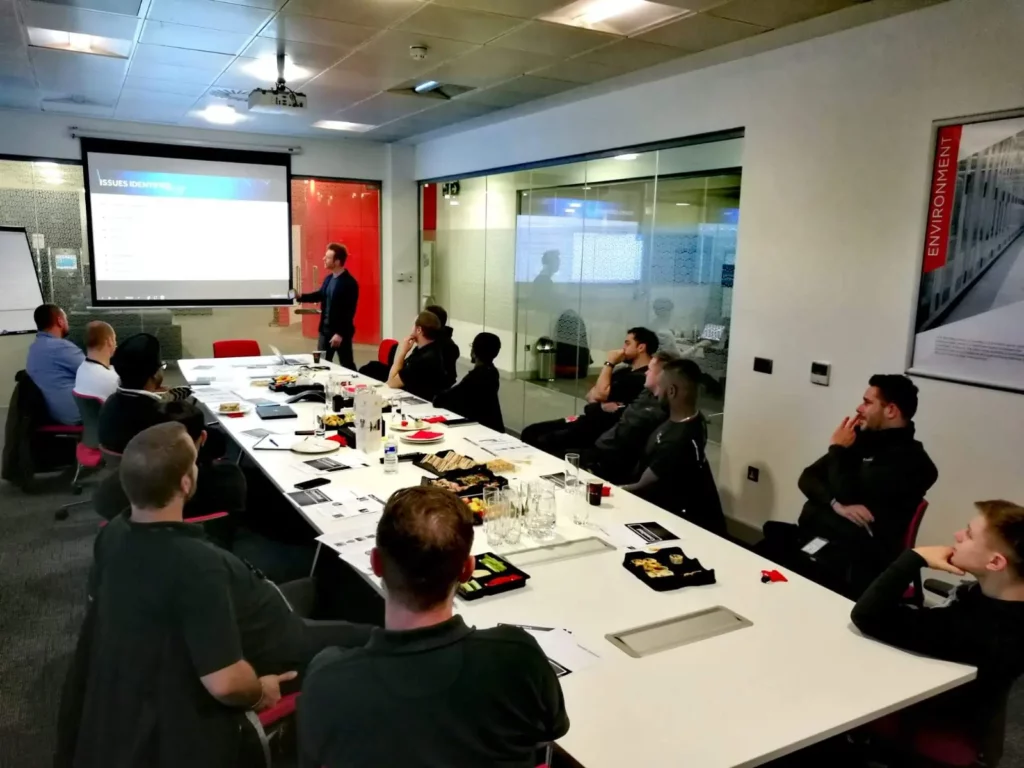
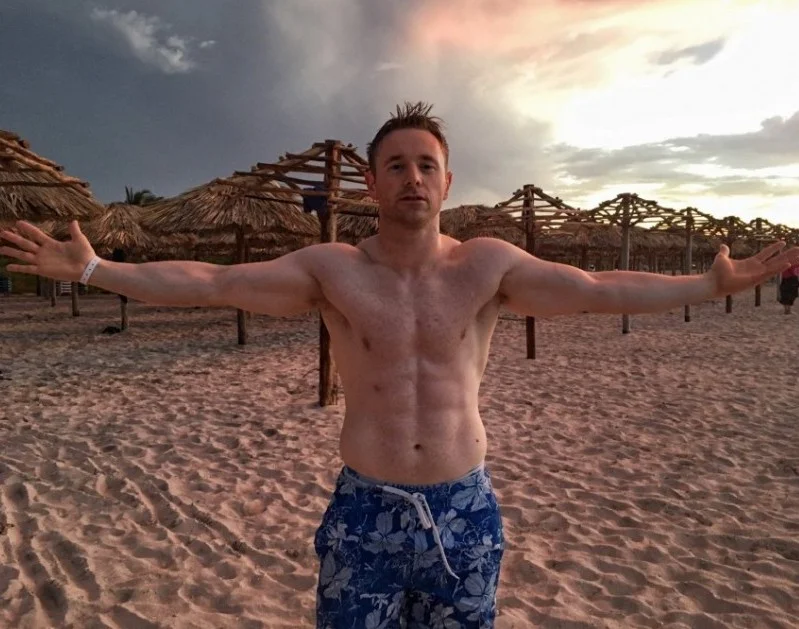
And that’s really my ‘offer’, this is a program for people who are tired of fitness programs that presume you have nothing else on your table and aren’t already making 100 daily decisions. The whole process is designed specifically for people who don’t want to feel like they have to choose between being successful or healthy.
I highlight the psychological pitfalls that high performers face in the section below. For what it’s worth, it’s coming from a place of experience and respect because I see the same patterns both in myself and in those whose work ethic I’ve come to admire..
When I look back on the people I’ve helped, I’m proud of the body transformations. But the work that has stayed with me, the kind of achievement you reflect on after a long work day, isn’t about dropping a few points of bodyfat for six-pack abs, or perfecting glute workouts for an Instagrammable silhouette, It’s been helping someone who feared they’d sacrificed their health in the name of ambition, recognise themselves. Restoring their ability to wake up and attack the day with the kind of energy they once took for granted.
The Mindset Traps that Plague High-Achievers
It’s not that you’re aren't working hard enough, it’s that the strategies that drive success elsewhere are failing you in fitness
Most of my clients aren’t struggling with motivation. They’re driven, consistent, and highly capable. But despite that, progress feels elusive. Sometimes it’s a plateau. Sometimes it’s a quiet, nagging sense that their current routine isn’t sustainable long-term. Rarely is the problem a lack of effort.
In fact, it’s often the opposite: Many find themselves over-training, under-recovering or both, whilst relentlessly applying the same productivity focused mindset that delivers in business to their exercise pursuits. But biology doesn’t reward hustle, It rewards calibration. That’s where most plans break down. Without successfully balancing mindset, nutrition, and training load to match the realities of a high-performing lifestyle, even a great fitness plan can stall.
Below, I’ll break down the three key mindset traps I’ve seen silently sabotage progress for busy professionals, even those who seem like they’re doing everything right.
"The mindset that built your career may be quietly eroding your health"
The identity trap
When finally feeling good is a red rag to a bull
I’ve noticed a curious pattern in fitness coaching high-performing professionals. A client typically begins work with a personal trainer feeling exhausted and burnt out. Partly from life, partly from the way they’ve approached fitness and dieting over the years.
Through structured training, strategic recovery, and wholesome nutrition, their baseline energy levels return to baseline, and they start to feel better. Exercise cues in deeper sleep so they think more clearly. They start to feel stronger and more resilient.
And then… discomfort creeps in, not in the body, but in the mind.
They start to feel restless. They are uneasy having more energy. Because for years, they’ve unconsciously tied their sense of worth to their work ethic, which was synonymous with depletion. They just aren’t used to operating with reserves, only from survival. It’s as if finally having energy again is a problem to be solved.
Why? Because exhaustion has been mistaken for discipline.
Producing internal narratives like:
“If I’m not grinding, I’m not valuable”
“If I’m not sacrificing, I’m not earning results”
“If I’m not red-lining, I’m losing my edge”
And as soon as they start feeling better:
“Should I be doing more?”
“If it doesn’t hurt, is it working?”
“I think I could train every day now”
Unchecked, this leads to predictable self-sabotage:
Restricting calories and carbohydrates
Adding unnecessary training sessions
Viewing planned rest as a weakness, not a tool
It’s an insidious cycle. Because you’re using your newfound equilibrium against yourself, chasing a feeling you associate with your identity… exhaustion, I call it the ‘identity trap’. In psychology, it’s called the identity consistency principle, the core idea is that we all have a powerful psychological drive to act in ways that are consistent with our self-concept. When there’s a mismatch between who we are and how we’re acting, it creates cognitive dissonance, an uncomfortable internal tension that we’re strongly motivated to resolve. In very hard-working people, feeling better can hijack this system and cause you to return to type, undermining the good work you’ve done in fitness, precisely because it’s relieving fatigue and guiding you out of burnout.
To make lasting progress, it’s not just your workouts that need recalibrating; it’s how you relate to yourself.
Here’s how:
Redefine productivity: Progress in fitness comes from adaptation, not exhaustion.
Build identity around sustainability: Anchor your self-worth in resilience, not depletion.
Learn to value energy reserves: Excess energy isn’t a threat to your work ethic, it’s a sign your body is thriving. This is when you’ll be at your most capable of pushing smart and hard.
The greatest performance edge isn’t found in how much you can sacrifice. It’s found in how intelligently you can recover, sustain, and advance. Learning how to push forward without falling apart.
Key Insight:
One of the hardest truths in fitness is that the problem may not be physical; it may be psychological.
Cardio: The comfortable detour
When familiarity prevents progress
Endurance training, long runs, and rides, pushing speed and distance, have undeniable appeal. It builds discipline, mental toughness, and it’s easy to track progress. You can compete with yourself, chase data and thanks to platforms like Strava or MapMyRun, even compare yourself to others.
For high performers, that makes cardio incredibly attractive. It’s structured, it’s challenging, and it delivers an immediate sense of achievement and is a productive outlet for healthy competition.
But a love of cardio training tends to create a blind spot. One that leads to big shortcomings in your overall health & fitness, especially if left unaddressed. Sometimes, even when you know you need to add strength work, you still default to your long runs and rides. Whether you realise it or not, you may find it very hard to decouple from the feel of being ‘on plan’ all your familiar metrics offer, even if they don’t serve your actual fitness goals.
Ask yourself, what is actually causing me the most discomfort? It’s a question that needs to cut through all the workarounds, virtue and misdirection that may be keeping you focusing on games you feel you can win. Right now, will shaving a few seconds off of a distance time change your life? Outside of the kudos in a running club, there may not be a lot of arbitrage in that outcome. But if you want to feel more confident and attractive, to improve posture and make clothes shopping a positive experience again, or if you’re really honest, you want a partner to look at you differently again. Of course, these aren’t always the goals. I’ve worked with people who simply want dedicate all focus to adding yards to their golf drive. But when these are the goals, they tend to be a significant cause of pain and should be addressed as a priority.
Picking the right tools for the job
If your real goal is to look better, you have to focus on more muscle, less fat and greater strength; relying on cardio alone will subtly work against you. Yes, it’s exercise, but not the kind that will move the needle for those goals. It’s the classic robbing Peter to pay Paul scenario, which is common among cardio lovers.
If you’re uncomfortable with how you look in the mirror or feel in your skin, moderate-intensity endurance training alone won’t solve your problems.
While it improves cardiovascular fitness, it does little for body composition. Yes, it burns calories, but at high heart rates, it burns almost exclusively carbohydrate, not fat. Combine that with a generally low caloric intake or restricting carbs, and you may actually risk losing your existing muscle mass. And when you lose muscle, your body fat percentage increases even if your weight stays the same.
Which explains why many cardio-focused men end up feeling ‘skinny fat’ and why so many women feel like they can never achieve the silhouette they desire. They are simply over-indexing on a type of training that needs to be carefully managed because it doesn’t drive either fat loss or muscle gain.
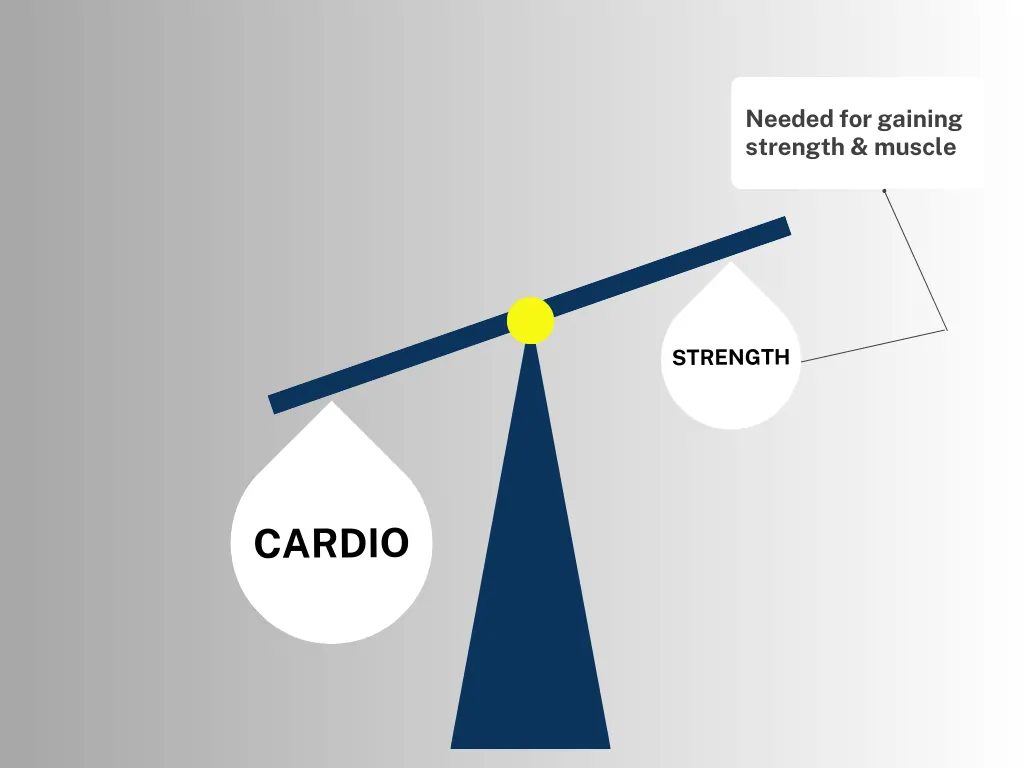
Too much endurance work without a resistance training framework or adequate nutritional intake can:
Inhibit muscle protein synthesis
Elevate cortisol chronically
Increase hunger + energy crashes
Perpetuate the cycle of “fit but not satisfied”
Create a calorie deficit that makes muscle gain nearly impossible
You can end up fit, but not strong. You can have impressive distance times, but you don’t necessarily even ‘look’ like you train. For people used to chasing PBs, this can be hard to hear. But avoiding harsh realities won’t help us get results.
Don’t get me wrong, endurance training isn’t the problem; it just has to be used strategically, not reflexively. If what you really want is a strong, athletic-looking physique, resistance training must play a major role in your workout plan, there is no other way. You’ll also need to monitor energy expenditure, anticipate recovery demand and make sure your cardio work is accounted for mathematically in your nutrition intake.
On paper, this is simple, but the real challenge will be embracing forms of exercise that are sharper tools for your goals that feel less intensive and take longer to pay dividends.
What to anticipate from other training styles:
Long Steady State Cardio
Efficient for fat loss and easy on recovery, but it's often underestimated because it feels ‘too easy’, tempting you to abandon it, or take it up a notch to where it's more challenging but out of it's zone of highest efficacy.
Highly Intensive Interval Training (HIIT)
Delivers intensity and an endorphin rush, but hits diminishing returns fast, so optimal 15-20 minute sessions will likely feel unsatisfyingly short compared to your long-distance work. Making it easy to overuse, the key is reframing how you measure its value. The benefit of HIIT comes from its presence in your training week, not from how long you can tolerate doing it. The intensity itself creates what’s known as the ‘After-burn effect’, where you burn more calories in the hours and days after the session.
Resistance Training
The foundation of long term body composition change, strength training feels completely different. You won’t always sweat heavily, you won’t get an immediate dopamine hit, and the necessary repetition can initially seem like a bit of a bore. The key to enjoying strength training is understanding that the process itself becomes the incentive, not the performance. The neurological demands shift, leaning heavily on acetylcholine, the neurotransmitter that sharpens motor control, focus and the mind-muscle connection.
Even a professional distance runner can feel like a complete beginner on the gym floor. For someone who prides themselves on mastery, that can be tough, but it doesn’t change the physiology of what it takes to reshape your body.
The point isn’t to give up what you love. Cardio and strength can (and should) co-exist, but if you want to look better, calibration is key. If you’re chasing faster race times but are unhappy with your body, it may be time to temporarily adjust your priorities.
And if you’ve never incorporated strength or mobility work, you’ll likely discover you run better, recover fast and feel strong when you come back to your endurance goals, particularly when your program is built for you specifically by a personal trainer.
Key Insight:
Endurance training is great for fitness, clearing your mind and developing resilience, but it's not a sharp tool for fat loss, and can undermine your muscle building efforts due to it's calorie burn and high barrier to recovery. The truth is, in the context of changing body shape, most endurance work has to be accounted for, rather than making any meaningful contribution. Cardio isn't the problem, hiding behind it is. So if you've been chasing a body transformation for some time but never really thought about how your endurance training plays a role in the overall equation, there is a strong chance that's why you've not yet seen results.
ROI Misattribution: Output doesn't = progress
Why your highest output weeks may be your least effective
In business, there’s often a clear correlation: More effort equals more return. You double the inputs, and you can scale the outputs. But in fitness, that formula eventually breaks down.
Many high performers unconsciously misattribute their fitness ROI. They believe more intensity, more volume, or more frequency will automatically lead to better results. But that’s not how biology works.
Progress comes from strategic adaptation, not brute force. So, simply looking for the highest possible physical output you can tolerate is always going to backfire.
But this “more is better” mindset shows up in predictable ways:
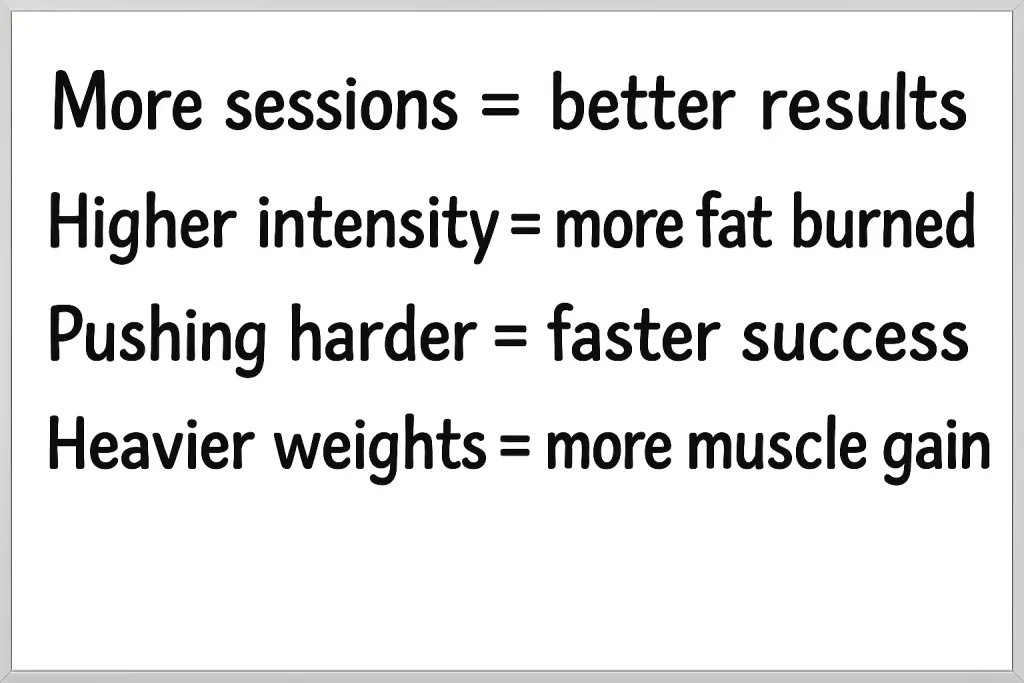
Training daily without planned rest
Progress doesn’t happen during training. It happens during recovery. Without rest, you’re just accumulating fatigue, not getting results.
Always lifting as heavy as possible
Maxing out feels productive, but it stalls long-term progression. You forego the opportunity to utilise progressive overload, so you never build a foundation.
Sticking with HIIT indefinitely
HIIT works until it doesn’t. Beyond a certain duration, you’re just adding fatigue with no new stimulus. It’s diminishing returns disguised as discipline.
Training at maximal exertion every session
You’re burning fuel, not fat. FatMax zones rely on sub-max intensity. Constantly pushing too hard shifts your body to glycogen, not fat metabolism.
The real cost of misreading your return
Pushing to the edge every day doesn’t accelerate results; it shortens the lifespan of your progress. You plateau faster. Fatigue builds. Recovery slows. Motivation drops. Your training becomes more about enduring fatigue than making physical progress.
This inevitably forces unplanned time on the sidelines through injury, illness or burnout. It’s the fitness equivalent of burning through ad spend on a campaign that isn’t converting. All noise, zero compounding value. And in the end, nothing to show for it.
Key Insight:
In fitness, more effort doesn’t guarantee more progress. That's assuming a linear relationship that doesn't exist. If you don’t understand how and when your body adapts, pushing harder just delivers expensive fatigue. Recovery, progression, and timing, not just effort, are what yield sustainable results.
Meet your virtual coaching team
Expereinced. Strategic. Human
We’re not a revolving door of part-time coaches working for a venture-backed fitness app.
We’re not experimenting online between sessions on the gym floor, and we’re certainly not influencers selling workout PDFs between brand deals.
We’re a full-time, specialist team of personal trainers and nutritionists delivering strategic online fitness coaching since 2015.
This isn’t a side hustle. This is our profession, we operate as a boutique consultancy, working 1:1 with a deliberately limited number of clients at any one time, by design.
We don’t coach at scale, we coach with intention. Fewer clients mean deeper relationships, better customisation and stronger outcomes.
We also don’t proclaim to be the right fit for everyone; that’s exactly the point. We focus exclusively on the challenges we’re best equipped to solve, drawing on years of experience coaching high achievers in finance, law, tech, media and healthcare. That ensures every client receives the insight, attention, and accountability they actually need.
Meet your virtual fitness coaching team
Experienced. Strategic. Human.
We’re a full-time, specialist duo, a personal trainer and nutritionist delivering strategic online fitness coaching since 2015.
This isn’t a side hustle. Or a venture-backed fitness app with a revolving door of part-time coaches. We operate as a boutique consultancy, working 1:1 with an intentionally limited number of clients at any one time.
We also don’t claim to be the right fit for everyone; that’s entirely the point. We focus exclusively on the challenges we’re best equipped to solve, drawing on years of experience coaching high achievers in finance, law, tech, media and healthcare. That ensures every client receives the insight, precision and accountability they need to succeed, without compromise.
Scott Laidler BSc
Personal Trainer & Program Creator
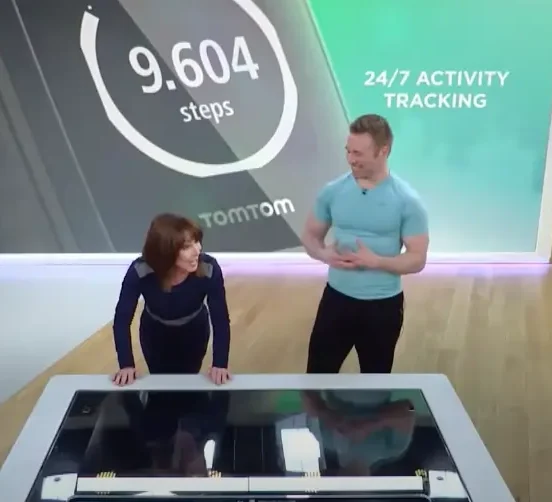
With over 14 years’ experience coaching clients all over the globe, I specialise in helping high-performing individuals align their fitness with demanding careers and complex lifestyles.
My background spans Hollywood role preparation, corporate wellness initiatives, and 10 years as a health & fitness writer for a broadsheet newspaper. That breadth has given me a lens on what actually works, across contexts, personalities and constraints.
What I’ve found is this: The biggest roadblocks in fitness aren’t technical. Many aren’t even related to exercise, at least not directly. They’re psychological. Identity, stress, perfectionism and burnout are more disruptive than a lack of information.
That’s why this online personal training service goes beyond workouts. It’s a comprehensive process designed to make fitness frictionless, even at the highest levels of personal and professional demand.
My bachelor of science degree in psychology, combined with real-world experience in fitness, allows me to help restore the energy and confidence that high-performance demands.

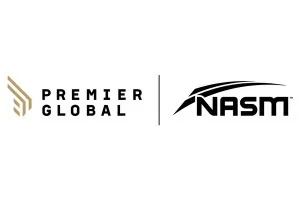

Scott Laidler BSc
Personal Trainer & Program Creator
With over 14 years’ experience coaching clients all over the globe, I specialise in helping high-performing individuals align their fitness with demanding careers and complex lifestyles.
My background spans Hollywood role preparation, corporate wellness initiatives, and 10 years as a health & fitness writer for a broadsheet newspaper. That breadth has given me a lens on what actually works, across contexts, personalities and constraints.
What I’ve found is this: The biggest roadblocks in fitness aren’t technical. Many aren’t even related to exercise, at least not directly. They’re psychological. Identity, stress, perfectionism and burnout are more disruptive than a lack of information.
That’s why this online personal training service goes beyond workouts. It’s a comprehensive process designed to make fitness frictionless, even at the highest levels of personal and professional demand.
My bachelor of science degree in psychology, combined with real-world experience in fitness, allows me to help restore the energy and confidence that high-performance demands.




Over the last decade, Scott’s work has been featured frequently in international media, offering a mindset-first approach to fitness which encourages performance, resilience and long-term transformation
Dr Katie Turianytsia - DMD
Our resident nutritionist

Dr Katie Turianytsia specialises in non-restrictive nutrition and healthy recipe development designed for real life. She’ll be the architect of your personalised meal plan and will support you in building a sustainable, satisfying way of eating, even while travelling.
You can expect approachable, easy-to-prepare recipes you’ll actually enjoy and feel comfortable sharing with friends or family. No bland bodybuilding style meal plans, no rigid food rules. Just smart, flexible nutrition that supports long-term body composition and wellbeing.
Katie sees each meal as an opportunity to practise self-care, not self-judgement. For clients used to viewing food only through the lens of weight loss on the scale, her approach can be transformative.
Many describe it as the first time they’ve felt truly at peace with how they eat, free from the cycles of restriction, rebound, and guilt that have dominated their past attempts at lifestyle change.




Online personal training case studies
Minal, medical professional, AUS.
When minal joined my online personal training service, she had a clear and time-bound goal: To fit back into her pre-pregnancy clothes by her 40th Birthday. Which was just four months away.
As a medical professional, Minal’s lifestyle mirrored that of many of my clients. Demanding hours, high stress and limited time to exercise. She just didn’t have the luxury of perfect conditions, so our approach had to be realistic and flexible, yet remain effective.
From the outset, we built a plan driven by strength training, with workouts that would flex between home and gym based on her schedule. Every session was designed to deliver a maximum return in the minimum time.
We kept her calories consistently above 2,000. This fuelled both performance and recovery, not punishing her body into submission. And as you can see from her results, that strategy paid off.
Minal achieved her transformation without ever feeling deprived. She didn’t just hit her goal, she redefined what sustainable fitness looks like at 40.
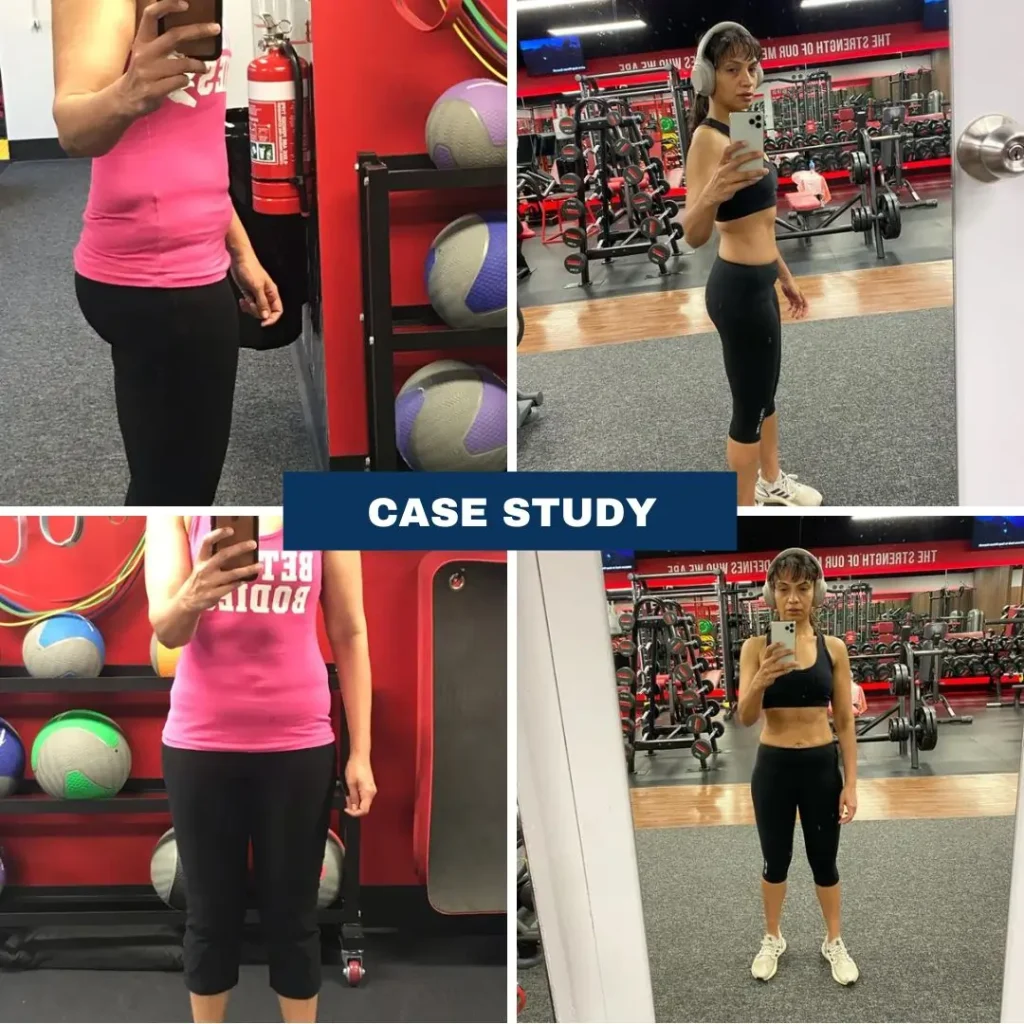
Minal, medical professional, AUS.

When minal joined my online personal training service, she had a clear and time-bound goal: To fit back into her pre-pregnancy clothes by her 40th Birthday. Which was just four months away.
As a medical professional, Minal’s lifestyle mirrored that of many of my clients. Demanding hours, high stress and limited time to exercise. She just didn’t have the luxury of perfect conditions, so our approach had to be realistic and flexible, yet remain effective.
From the outset, we built a plan driven by strength training, with workouts that would flex between home and gym based on her schedule. Every session was designed to deliver a maximum return in the minimum time.
We kept her calories consistently above 2,000. This fuelled both performance and recovery, not punishing her body into submission. And as you can see from her results, that strategy paid off.
Minal achieved her transformation without ever feeling deprived. She didn’t just hit her goal, she redefined what sustainable fitness looks like at 40.
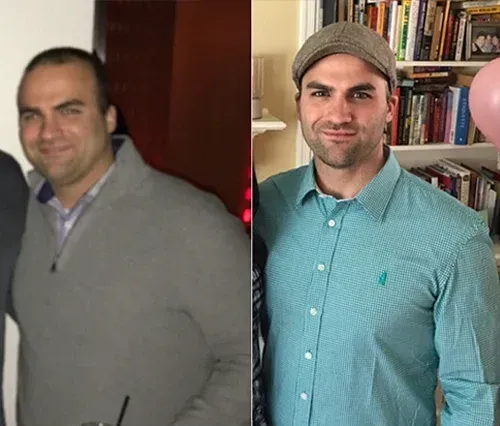
Dom, executive, USA.
When I started working as Dom’s remote fitness coach, he had a simple but powerful goal: To return to the weight where he felt at his best. He wanted to be confident and energised against, and secure in the knowledge that maintaining a healthy weight was back under his control.
Dom had gradually deprioritised fitness. The scale had slowly crept up, and energy levels had dropped. His usual routine no longer felt like it was serving him. But he was ready to do what it takes to make a change, but due to work constraints, he wasn’t in a position to completely overhaul his life to do it.
The foundation of his training program was built on efficient workouts that could be done anywhere, every workout covering a number of bases, calling on multiple exercise modalities. This helped because we knew, at times, workouts could get sporadic. We combined this with a flexible approach to nutrition, built on first principles rather than rigidity, so it supported progress even when eating out with clients.
Over the next eight months, Dom lost an impressive 49 pounds, without a trace of traditional dieting.
And because these changes were sustainable, the results have stuck. Dom didn’t just lose weight, he’s reclaimed control of his health, without sacrificing the career or lifestyle he’s worked so hard to build.
Dom, executive, USA.

When I started working as Dom’s remote fitness coach, he had a simple but powerful goal: To return to the weight where he felt at his best. He wanted to be confident and energised against, and secure in the knowledge that maintaining a healthy weight was back under his control.
Dom had gradually deprioritised fitness. The scale had slowly crept up, and energy levels had dropped. His usual routine no longer felt like it was serving him. But he was ready to do what it takes to make a change, but due to work constraints, he wasn’t in a position to completely overhaul his life to do it.
The foundation of his training program was built on efficient workouts that could be done anywhere, every workout covering a number of bases, calling on multiple exercise modalities. This helped because we knew, at times, workouts could get sporadic. We combined this with a flexible approach to nutrition, built on first principles rather than rigidity, so it supported progress even when eating out with clients.
Over the next eight months, Dom lost an impressive 49 pounds, without a trace of traditional dieting.
And because these changes were sustainable, the results have stuck. Dom didn’t just lose weight, he’s reclaimed control of his health, without sacrificing the career or lifestyle he’s worked so hard to build.
Nutrition, simplified.
Three flexible paths based on how hands on you want to be
(From full structure to simple tweaks. We'll work at your pace)
1. Full meal plan
2. Calorie + macro targets
3. Food log optimisation
Fast. Simple. Delicious.
These aren’t your typical fitness meals. They’re quick to prepare, easy to enjoy, and designed to fit your routine. Most can be shared with your family, so you’re not cooking twice or eating separately.
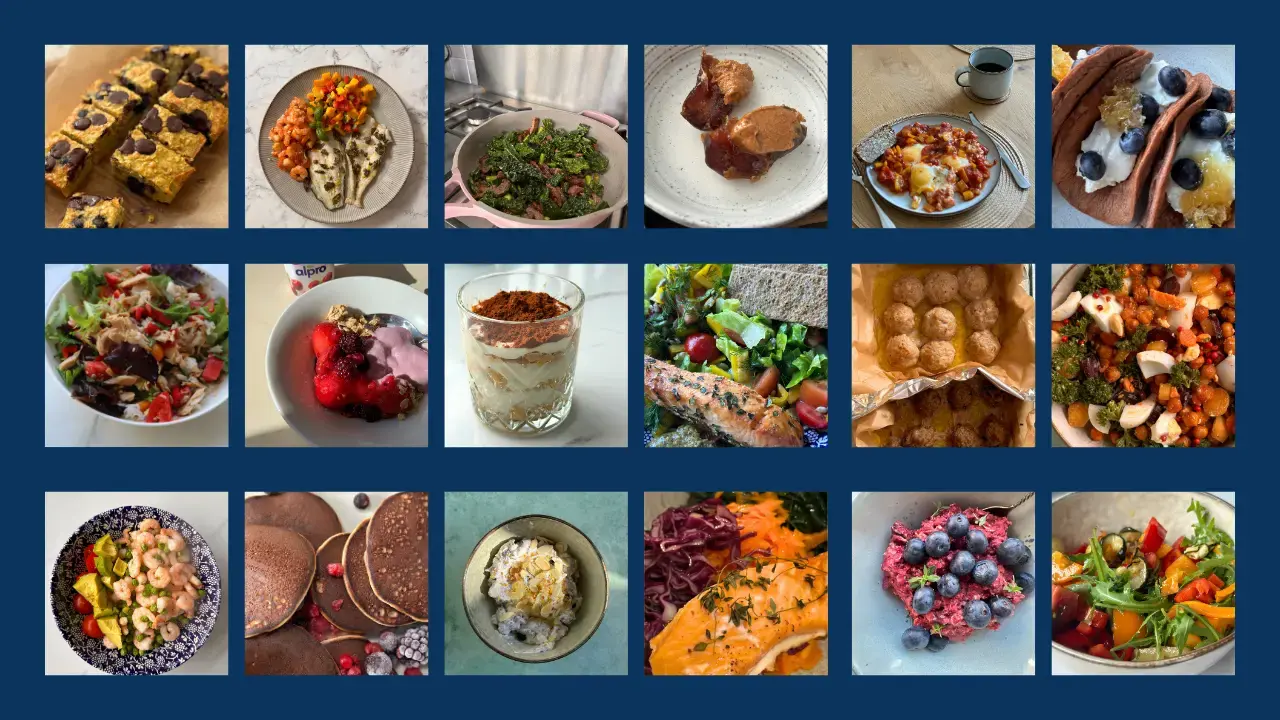
Smart support. Real accountability.
Most fitness plans fall apart when life gets busy. This won't because we anticipate the obstacles, adapt your plan in real time, and keep you focused on the next move you can control.
Direct line to your coach
Have a question, need an adjustment, or face a curveball like travel or overwhelm, message me directly in the fitness app, and I’ll adapt your program so nothing stalls your momentum.
Nutrition feedback when you need it
Send over restaurant menus or food logs for review, and I’ll help you optimise without overthinking. Stay social, eat out, or adapt meals on the fly, helping you remain flexible without falling off track.
High-level strategy calls
If a challenge needs more than a simple fix, we’ll hop on a call. You’ll move forward with a clear course of action that aligns with both your goal and your reality.
Technique check-ins
Not sure you’re doing an exercise right? Film your set, send it over, and I’ll get back to you with notes. That way, you progress safely and efficiently, confident that you’re doing everything correctly.
Progress monitoring, done for you
I track your progress each week. If anything dips, sleep, steps, and nutrition. I’ll catch small trends before they spiral so that you don’t lose subtly lose progress.
Weekly Check-in + Review
Even when we message frequently throughout the week, we’ll review trends every week, highlight wins and anticipate any adjustments for the week ahead.
Trusted by busy professionals in law, finance, medicine and tech because we offer a service that works when others fall short, here's how we close the gap other programs leave open:
More oversight than a local trainer
In person trainers are the backbone of the fitness industry, I too, have my 10,00 coaching hours on the gym floor. But in comparison to online training, will you receive oversight on nutrition + recovery outside of workout sessions, to stop you drifting from your goals, or will communication mostly be confined to booking session times and sending invoices?
More permanent than fitness challenges and races
30-day challenges and events are motivating, but they rarely stick. Because they don't build lasting habits (research shows it takes 66 days on average). Perhaps, right now you don't need another short-term distraction that can't be maintained; and would be better off with a repeatable system that helps you build an identity that supersedes motivation and will power on the psychological level, you can bolt challenges and events onto that foundation later, rather than the other way around.
More cohesion than a commercial fitness app
With high production quality workout videos 'Netflix style fitness content' certainly provides an abundant choice. But without a connected system, they could amount to a string of isolated workouts. Delivering limited progression and little predictive value for strength improvements, muscle gain, or long-term results.
More strategic than fitness classes
Bootcamps and group fitness are a fun way to exercise, great for community building, I used to deliver them all over London. But they struggle to deliver on muscle gain for operational reasons, and often fall victim to the theatrics of what I call the 'sweat economy', offering a high calorie burn, but little lifestyle integration.
More specialisation for high-performers prone to burnout
"Just hustle!" might be great advice for a college athlete, but when 71% of legal workers reporting work negatively affecting their mental health, 9 out of 10 lawyers experience burnout during their career and 82% of tech workers report being close to burnout, working professionals juggling career, family and fatigue need coaching that builds resilience, not forces compliance.
How motivation really works in fitness
Motivation is probably the biggest misconception in fitness. Motivation isn’t something you either ‘lack’ or ‘have’, and in my observation, it would be unfair and inaccurate to consider it a personality trait. Think of it more like a force acting on you, like atmospheric pressure or gravity, influencing you at all times, but you only notice it when there is a dramatic shift.
The force, in this case, is the constant tension between the avoidance of pain and feeling good. Technically speaking, you will feel motivated to the extent that you associate more pain with circumstances staying the same than you do with making a change, that’s really it. That’s what drives all action and explains all inaction.
A harsh reality in fitness, for both coach and client, is that no one can make you want something you don’t already want for yourself. A coach can inspire, guide, support and hold you accountable, but they can only hold you accountable to the change you’re already determined to make.
This is why outsourcing your motivation to anyone, including a personal trainer, puts you on precarious ground. Your locus of control becomes completely external, and generally in life, you want to avoid that wherever possible.
Insidiously though, if you aren’t really ready for change, and aren’t willing to face that reality, buying another new fitness program can offer an opportunity to avoid holding a mirror to your decisions. Sometimes joining a new fitness plan subconsciously serves as a way to outsource failure, or at least sole responsibility for it. In this context, when a new initiative becomes just another failed attempt, there is no need to overly scrutinise your role in it; the program failed, the coach let you down, and you can draw a line under it, ego intact, at least for a while.
This is why historically the best-selling fitness programs, supplements, and diet protocols tend to be unsustainable weight loss plans. Subconsciously we all know that there is nothing new under the sun, at least not so innovative that it can offer a panacea with no long-term consequences. When intuition is telling you something is too good to be true, it usually is.
Never underestimate the mind’s ability to override instinct to avoid making the change we most need to. The ability to make those changes is a hallmark of those that succeed, the lack of which is the reason so many have the same challenges with weight and composition for decades, notwithstanding specific health concerns. Generally, the comfort of staying the same simply outweighed the pain of making a change.
The psychology of the start/stop cycle
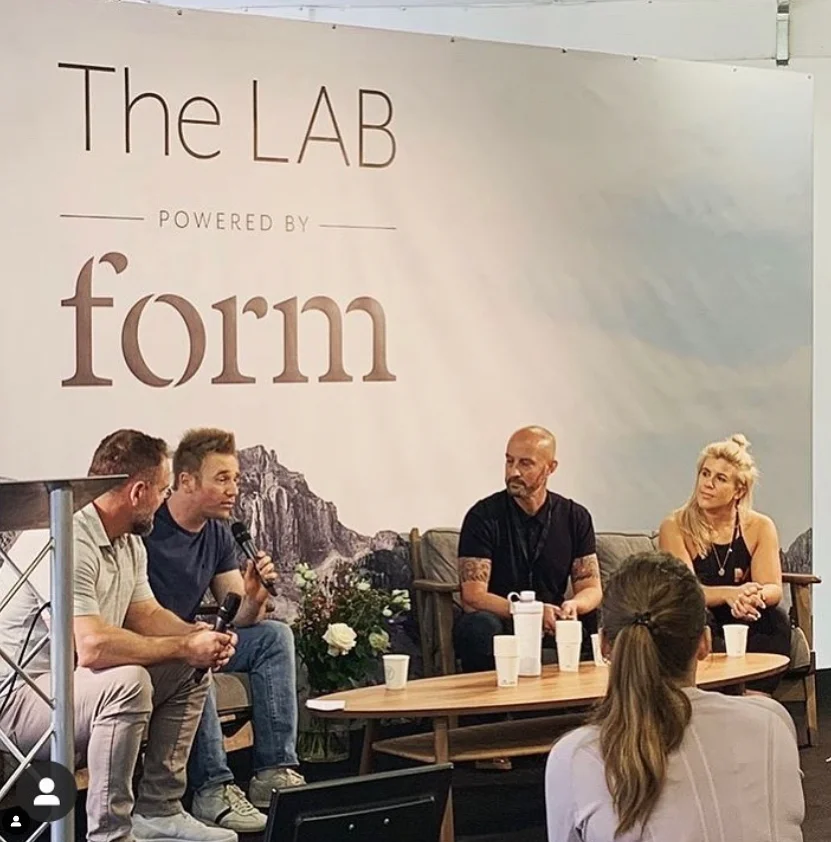
Many people find themselves trapped in recurring start/stop cycles because they build their fitness attempts on the pain of discomfort.
The driver may be body image, a lack of confidence or feeling like they aren’t living up to their own standards. Either through poor instruction or simply the human impulse to take shortcuts, the plan fails because it was built on unsustainable restriction and rigidity.
That’s navigation by crisis, which leads to poor decisions, made worse when the only options on the table run on inefficient methodology; it’s a huge waste of time and energy.
Before long, it crashes and burns, forcing time on the bench. Inaction makes things worse, until eventually enough discomfort accrues to force a new round of action. Pain makes us desperate, so we overcorrect. You slash calories, overdo exercise, and burn out again.
The short-term fix approach was always a bad idea. The trap is that each time you attempt it, you’re a little more advanced in age, having lost muscle both from inactivity and what you’ve unintentionally jettisoned through restriction. So even if you try the exact same approach again, the context is different because your metabolism is compromised, and you now burn fewer calories at rest than you used to.
The enthusiastic, active part of the cycle tends to get shorter on each return, and the cycle becomes more painful and less motivating. Worse still, is that the associations you’re building with exercise and dieting, are all trending in the wrong direction, and become a new source of pain. You now have an inaccurate read on what it would take to move the needle on your fitness goals, and poor data means bad decisions.
This is why motivation is so poorly understood. If you’re used to getting a poor return on your effort, you can easily be highly motivated NOT to take action. Inertia sets in, more time is spent on the bench, encouraging even more short-term fixes, when you decide you have no choice but to give it another try. You can see how this is a race to the bottom.
Fitness motivation for the high performer
If you’re someone who typically gets things done but finds yourself unmotivated with fitness, it’s probably not a reflection of who you are.
You’re probably running on empty, you’re just as prone to all of the same pitfalls above, with the added complexity of working way beyond the typical 40-hour work week, bringing with it exposure to stress beyond that of the typical person. To counteract it, you’ve no doubt developed a work ethic that allows you to push through obvious signs that you should rest.
This kind of determination serves you well in business, but it’s a big blind spot in fitness, and part of the reason that 70% of C-suite executives right now are considering leaving their job for one that might better support their well-being.
The costs of ignoring your health are like compound interest in reverse. Mistakes you get away with at 20 become a manageable issue at 35, but by 55, it could be life-altering, and by 65, irreversible.
A practical example of that would be the use of a sauna. Health clubs tend to have signs advising not to use them if you have high blood pressure. That’s because blood pressure rises under the stress of the heat, not a problem in a healthy individual, but it could trigger an event in someone with chronically elevated blood pressure.
Here’s the irony: Regular sauna use has been shown to lower all-cause mortality risk by 40%. One of the benefits it offers is that it helps regulate blood pressure. In this scenario, neglect at one stage of life, has actually wiped off the option of a possible solution at a later stage.
These aren’t binary, absolute propositions. They come with naunce and the sand shifts slowly over time, but that isn’t to say the impact is any less consequential. Another everyday example is maintaining adequate hydration. We need water to live, but I’ve worked with dozens of CEOs of international companies who prior to this program, simply didn’t reliably drink even half their recommended amount of water each day.
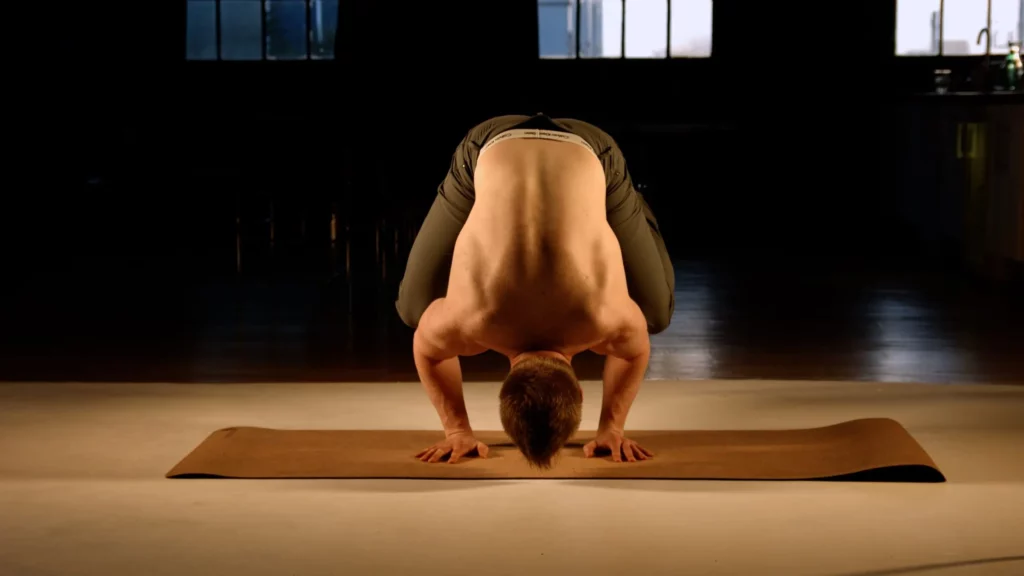
And that’s the point, we can’t go more than three days without water to stay alive. Of course, in the modern world, you’ll likely never find yourself in a hydration crisis unless you’re lost at sea or tackling an event as demanding as the Marathon des Sables.
Yet at the same time, millions of people spend their entire careers subtly, but chronically dehydrated. We can’t pinpoint the aggregate effect of that over 40 years on mental focus, kidney health, skin health and visible signs of ageing, not to mention daily recovery times from exercise and sleep quality, but it is affecting all of them.
We don’t account for long-term consequences because we’re evolved to focus on acute threats. In psychology, this is called temporal discounting, a cognitive bias that could cost you dearly when you run the same audit we just did on hydration, with the impact of a failure to manage inactivity, sleep quality, healthy eating and stress relief. The effects may be wide-reaching and could impact your endocrine, cardiovascular, neurological, digestive and circulatory systems, and that’s before we even touch on mental health.
Perhaps then, it’s time to rise above instinct and into strategy.
After all, you do it for your business, your teams and your projects, why wouldn’t you apply that same concern for the future to your health?
Some interesting questions to ask yourself could be:
- "What gets taken away from me or those that see me as a role model if lifestyle changes are never made?"
- "How does my current trajectory eventually impact my relationships, baseline energy levels and ability to show up as the person I want to be in the workplace and at home?"
The game changer won’t be rousing motivation, that might occasionally get you through a tough spin class. But if you want a real lifestyle change, it will only come from the momentum garnered by implementing an efficient, multi-modal system, built for consistency.
That way, you’ll never again be searching for motivation. You’ll transcend emotional states that come and go, and start building habits you just act out, whether you feel like it or not, on any given day. That’s where compound effects begin working for you, rather than against you.
It’s a self-reinforcing cycle, the opposite of the painful start-stop cycle so many find themselves in, and the only real solution to your health & fitness frustrations.
The million-dollar question, will this program ‘Motivate' me?
If at this stage you’re wondering if this program will work for you, I don’t think that’s a question of methodology; the process and results are documented, and they are built on foundational principles. I’ve provided the info for a deep dive should you want to dig a little deeper.
There is only one question you need to ask:
- "If I had the perfect plan, tailored to me and proven to wor - Would i follow it at 80% consistency?"
If the honest answer at this point in your life is no, that’s valuable insight. It’s crucial to acknowledge that there are different states of readiness for any lifestyle change. You might need in-person accountability to tap into your natural conscientiousness, or you might need to start with fun physical activities adjacent to actual workouts as leisure before transitioning to structured exercise once movement becomes a habit. For some, it might just not be the right time in your life to do this, and that’s ok.
But If the answer is yes, then after years of experience, client success and refinement, this program is, in my opinion, the closest thing you’ll find to the perfect solution, and your results are virtually guaranteed, not because I’ve reinvented the wheel, but because we’ll have built a system of inputs and outputs that offer a predictive value on your time and effort, putting you in a position where all you need to do is implement.
Accountability that builds autonomy
Because the goal isn't to check-in forever, it's to build the self-efficacy not to rely on it
The real goal of my online personal training service isn’t endless check-ins; it’s to develop the self-efficacy to stay on track independently.
Even the best-designed fitness plan can fall flat without accountability. But true accountability isn’t about hand-holding. It’s about having a reliable partner who helps you follow through on your own intentions.
By joining this fitness program, you’ll be committed to meaningful change in your behaviours, habits and mindset. My role is to reduce friction, spot patterns and create space for consistent progress, even when life gets complicated.
Ultimately, a coach shouldn’t be the deciding factor on whether you exercise or don’t. I’m sure that’s not what you want for yourself; that power belongs to you. That’s why I encourage every client to connect with their deeper motivations. The ones that transcend what happens in the mirror over the next 12 weeks. I’m talking about tapping into what success in fitness really means for their life moving forward, and for the people they lead or hold them up as a role model, whether at work or at home.
Yes, external motivation, like a coaching leaning over you with a stopwatch, might power you through a single workout session. But lasting transformation is driven from within. It operates beyond willpower, beyond short bursts of inspiration. It’s about upgrading the decision framework you use to run your life, so that making healthy choices becomes instinctive, not effortful.
From coach to 'strategic advisor'
You need strategic oversight, not retrospective catch ups.
You may have experienced “catch-ups” in past online fitness coaching, perhaps as part of your weekly or monthly check-ins. They are designed to review your progress, and while well-meaning, these calls tend to reveal a lack of any real oversight in between. And in a week, let alone a month, a lot can drift off course.
That’s why, instead of relying on retrospective conversations, I prefer to take a real-time approach. Maintaining a line of communication throughout the program, and considerable oversight on your metrics and consistency running in the background. This way we can proactively address challenges as they arise, whether that’s a shift in schedule, business travel or a dip in performance. It’s how I help keep you consistent, even when your schedule isn’t.
To highlight the difference in approach, here’s how I’d respond to a trend in a client’s calendar, someone we’ll call Sam, who’s been missing workouts at predictable times:
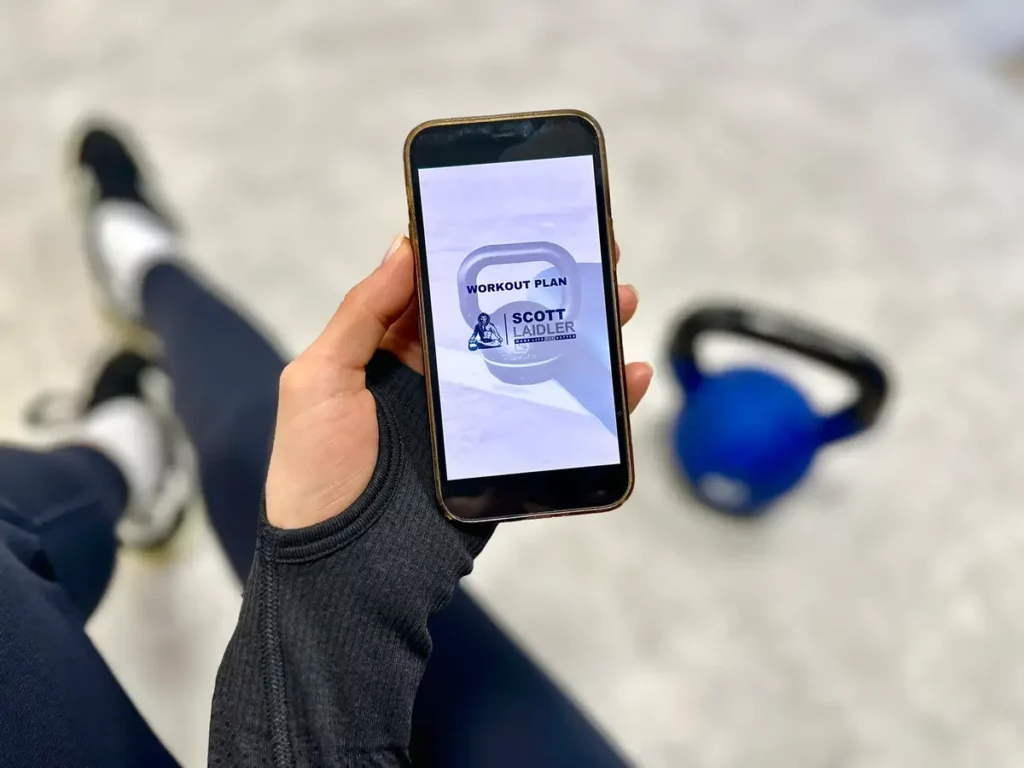
You may have experienced “catch-ups” in past online fitness coaching, perhaps as part of your weekly or monthly check-ins. They are designed to review your progress, and while well-meaning, these calls tend to reveal a lack of any real oversight in between. And in a week, let alone a month, a lot can drift off course.
That’s why, instead of relying on retrospective conversations, I prefer to take a real-time approach. Maintaining a line of communication throughout the program, and considerable oversight on your metrics and consistency running in the background. This way we can proactively address challenges as they arise, whether that’s a shift in schedule, business travel or a dip in performance. It’s how I help keep you consistent, even when life isn’t.
To highlight the difference in approach, here’s how I’d respond to a trend in a client’s calendar, someone we’ll call Sam, who’s been missing workouts at predictable times.
Let me show you axactly what that looks like in practice:
Casual check-in:
Coach: “Hey bud, you did 3 of 8 scheduled workouts last month. Great job, maybe next month, let’s hustle a bit more!”
Sam: “Thanks, I'll try to double down 💪"
Strategic Feedback:
Our Method: Coach:"Morning Sam, I’ve noticed that if we miss sessions it tends to be toward the end of the week. Is there a particular obstacle there that we might overcome?
Sam: "Yeah, Fridays through Tuesdays, I work from home and the gym gets packed, by 5pm it winds up easier to skip it and get a bit more work done, and I drift a bit at weekends with social stuff"
Our Method: Coach: “Totally get it. I’ve rebuilt your weekend workouts to include options that don't require gym access, You'll have a kettlebell version plus a bodyweight circuit which you can do at home, or even out and about in an open space”
True accountability isn’t about cheerleading or pressure, it’s about precision. I work with a small enough client base to understand what each person is working toward and why it matters to them.
That means I can remind you of what you said you wanted, in the moments that count. Having someone in your corner who remembers your goals, especially when you were most committed to them, helps you align your actions with intentions.
This isn’t about guilt or pressure, you already want these results for yourself. My role is to offer strategic course corrections to help you stay aligned even when motivation dips. That’s what real progress looks like, and that’s how you build results that actually last.
What happens after 12 weeks?
This program isn’t built on the presumption that you’ll always need or should be reliant on a coach. It’s intended to encourage well-informed autonomy that lowers the barrier to action, no matter the circumstance.
By the end of the program, you’ll know how to train, eat and recover in the context of a busy schedule, and how to adapt to setbacks or changes in location or available time.
That means continued engagement becomes a strategic decision, not the determinant of whether you take action. Some of my longest-standing clients simply love the idea of outsourcing their new training ideas to someone with their ear to the ground in health & fitness, so that they know they are always kept on track. Others like to see the 12-week program as a project, with a clear outcome and deadline.
So at the end of 12 weeks, we’ll schedule an off-boarding call to discuss your next steps based on where you are and what you want to do next, which could include:
- A period of self-led coaching - Utilising and building on the framework we've established together
- Ongoing high-touch coaching - If you want to continue weekly check-ins and oversight on your progress
- Workout planning & support - where I build your training phases and am available for support when you need it, but don't actively maintain daily oversight on progress or send formal check-ins
Whichever option you choose, you’ll leave the program with more than just your results. You’ll possess a reliable framework which you can use to build on and replicate your achievements whenever you need to.
From burnout to breakthroughs: What high-performing professionals are saying
Hear about body transformations & performance improvements from my clients themselves
If you’re wondering whether this program can genuinely create lasting change, don’t just take my word for it. In this short video you’ll hear directly from 15 of my clients, professionals in their 30s to 60s who’ve balanced demanding careers, family obligations and personal setbacks, yet achieved results they once thought were out of reach.
A clear theme runs through each story. They have fewer rigid workouts, enjoy more outdoor activity and are eating more food, not less, than in past transformation attempts. That’s the result of a non-restrictive, sustainability-first approach. If I wouldn’t prescribe it for a full year, I won’t include it in your plan. The outcomes speak for themselves.
What's included in your coaching experience
Everything you need to build habits for a lifetime
Custom workout program
Your plan is personally built using my 28-step method, proven to deliver results even at 80% compliance. It's precision calibrated to your lifestyle, goals, and ability to execute under pressure.
Nutritionist-designed meal plan
Enjoy a personalised, sustainable meal plan crafted by our nutritionist, Dr Katie Turianytsia. You will also receive macronutrient targets and extensive nutrition planning resources.
Instant messaging support
You'll have access to direct instant messaging support from me to cover questions, feedback or on the fly adjustments. Especially useful for travel, changes of location and equipment.
iOS / Android fitness app
Access your program via a custom app with built in workout tracking, demo videos, wearable sync and zero guesswork.
360° Lifestyle focus
This isn't just workouts. Your plan includes habit coaching and lifestyle measures that help turn your workout and healthy eating efforts into lasting change.
Onboarding call with Scott
Your program starts with a personal onboarding call with me to tailor your strategy, walk you through your plan and confirm you're set up for success from day one.
A coaching platform engineered for habit formation
Everything you need to build lasting routines, tracked and refined in one intuitive fitness app
Never miss a beat
Stay consistent, especially when life gets busy. Your workouts are auto-logged on the client app so that your coach will always know how to progress and adapt the plan based on real data
Optimised beyond the gym
Track daily inputs like sleep, hydration and stress so your results aren't sabotaged by what happens outside the gym
Sync wearable devices
Sync your Apple Watch, Fitbit, Garmin or other fitness tracker so your program syncs with your real-life activity levels and recovery
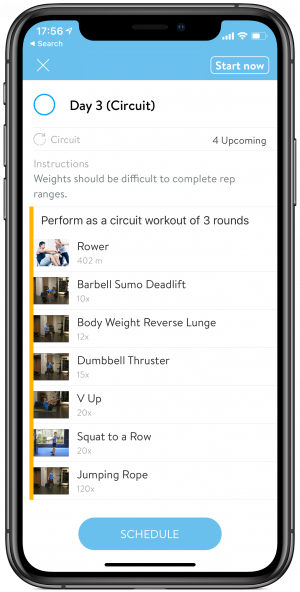
Exercise demonstrations
Eliminate guesswork. Every workout includes step-by-step video demos and form tips so you can train with confidence
See your transformation
Track visible progress, not just weight. Upload transformation photos and stats to see proof you're moving in the right direction
Flexible calendar
See your week at a glance and shift sessions around when life gets in the way, without losing momentum
Fitness coaching that fits in your pocket
Zero Learning curve. Just install, open and go.
Setup takes 60 seconds, on iPhone or Android. From day one, your workouts, progress tracking and nutrition targets will all be in one place.
You’ll never need to guess what to do. Just open the app and everything scheduled for that day will be right there. This level of simplicity helps to keep you consistent.
Momentum doesn’t come from raw motivation, it comes from structure and eliminating the friction to getting started. This app delivers both.
“I love that I can just pull my workouts into another day when work runs over, it relieves a lot of pressure”
– Lyn, Consultant & mum of two
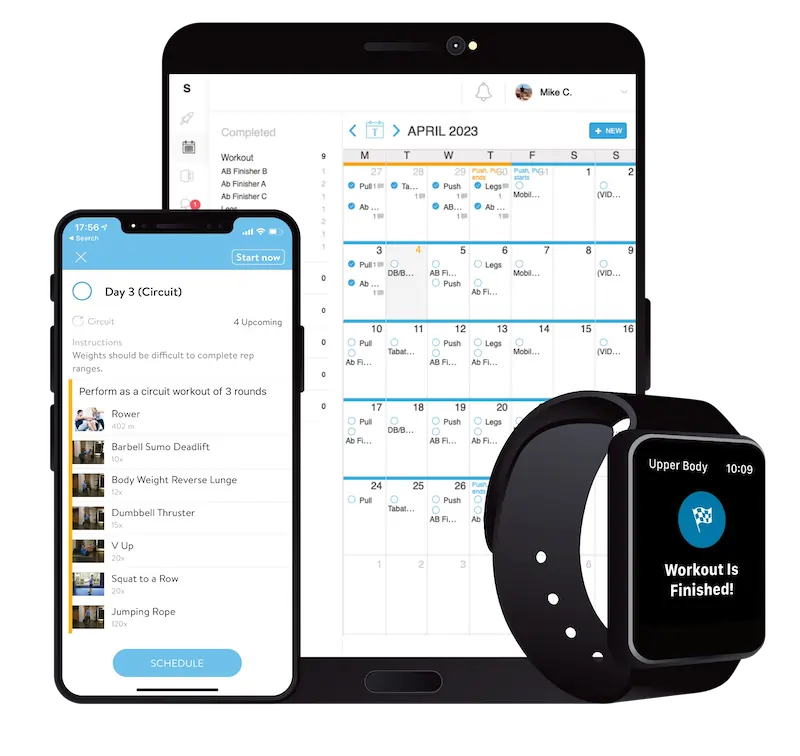
Who this program is built for (and who it isn't)
To get real, lasting results in fitness, you need a sustainable approach. That means doing it in a way you’d actually be able to maintain under real-world pressure. In over a decade as a personal trainer, I’ve never seen shortcuts lead to results that last. That approach might win a prize on a game show, but they don’t work in real life. That’s why it’s important that we’re upfront about who this program is built for and who it isn’t.
- Focus on composition change: Simply weighing less doesn't improve your life. Improving your body composition does. Alongside protecting your metabolism, confidence and long-term health. That's why it's our main benchmark for success
- Long-term focus: There's no 'fast way' vs 'slow way' to get results. There's only sustainable vs unsustainable. Attempts to speed things up can undermine sustainability. So we stay away from anything that won't hold up under pressure
- Mindset first approach: Achieving results and then keeping them takes more than willpower. It takes alignment. Those who succeed here aren't relying on motivation, they're building systems. They shift from short-term effort to long-term identity
- Weight loss at any cost: If you're looking to cut calories to an unsustainable level or take potentially irreversible risks with your health, this isn't going to be the right training program. I just don't think weight loss by any means is a healthy approach, it rewards a lot of self-sabotaging behaviour
- A quick fix: You will see rapid results to the extent that there is low-hanging fruit on the table at the start of the program, these can be very impressive, but we’ll never pursue speed at the cost of sustainability
- Single outcome focus: If you need to look a certain way for a specific date (weddings, holidays etc) and plan to return to old habits after this likely won't be the best fit. We're building systems that last, not peaks followed by collapse
I don’t make the distinctions above out of judgment or elitism. There are other providers that’ll happily serve those goals. I’ve decided to focus my energy on making sure, if we crossed paths 10 years from now, you’re still training consistently, eating well, crediting this program as the turning point.
Not regretting a plan that manipulated the scale, overtrained you into exhaustion, or left you feeling like you failed every time you broke a perfect streak.
I won’t offer you an unsustainable plan just to make the numbers look good. That’s taking our eye off of your future, in favour of the quick win, and that never ends well.
I’ve seen what happens when driven people push themselves so hard, for so long, in the name of ambition that even exercise itself becomes a source of depletion. They end up burned out physically and mentally, wondering why something meant to help them is running them into the ground.
A well designed health & fitness plan can be a way out of that loop. I see it not just as a way to change your body, but as a vehicle for personal development.
Done right, it restores presence, resilience, and joy. Done wrong, it becomes a beautifully decorated trapdoor.
That’s why I’d rather lose a sale than someone’s trust. Quick fixes fade. Real change deserves better.
A comprehensive health & fitness program for busy people
12-Week Online Personal Training Program
A structured fitness and nutrition coaching program designed for busy professionals: Offering custom workouts, personalised nutrition plans, and high-accountability support for sustainable results.
£456
15% discounted upfont payment
3 x Monthly payment option available
- I build you a custom exercise program + meal plan and hold you accountable to them
- Full Monthly Meal Plan + Nutritionist Dr. Katie Turianytsia will review your food diary
- 1:1 Onboarding video call with Scott
- Personal weekly check-in report from Scott via instant message
- Program adaptations made within 24hrs (Mon-Fri)
Next Start Date (updated weekly):
21st July 2025: 3/5 spaces available
Please book your fitness consultation to apply
Start your transformation with a 1:1 consultation
We'll discuss your personal fitness strategy personally
Craig S.
Real Results
“Scott delivers a program that is flexible and accommodating to your lifestyle and work commitments. He is always on hand to answer questions. I have more energy and feel 10 years younger!!”
Claire Louise Taylor
Confident & Happy
“It’s amazing what confidence can do to you and thanks to Scott Laidler online personal training I feel so much more confident and happy in myself, still got a lot to go but looking forward to doing another 6 weeks at it 😀💪🏼 Thanks!!”
Online personal training reviews:
Frequently asked questions:
Do I have to have a consultation before signing up?
Yes, all potential clients begin with a consultation call, and an application is required to access one. This step is in place to ensure that the program is a fit for you and your goals.
Unlike pre-programmed fitness apps or automated coaching platforms, this is a fully tailored 1:1 coaching experience. This means I’ll need to know your training history, schedule and challenges upfront, before making any recommendations.
There is a short 2-3 minute application process to allow me to understand your specific circumstances, and if I’m confident I can help, I’ll send you a scheduling link within 24-48 hours of your application.
During the consultation, we’ll map out your personal fitness strategy. It’s not a sales call, it’s a mutual assessment. If we agree it’s a strong fit, you’ll be invited to begin. If not, I’ll offer a professional recommendation to point you in the right direction.
This approach helps protect your time and ensures that I’m only taking on clients I can genuinely help succeed. Generally, we can progress from application to starting your new fitness program within 7 days.
Who is this coaching program for?
This online personal training program is ideal for busy professionals who want a long-term solution to their health & fitness goals, rather than short-term results.
If you’re looking to build maintainable fitness habits and improve your body composition through structured strength training and nutrition support, moving away from restriction, you’re likely a great fit. My clients are high-performing individuals juggling demanding careers, families and a packed schedule.
My approach to fitness coaching emphasises consistency, habit formation and sustainability. While that may seem like a slower route, it’s the only one I’ve seen consistently deliver lasting body transformation, an uptick in energy and physical resilience.
I’ve compiled a more detailed breakdown of who thrives with remote fitness coaching, including some of my real client scenarios that demonstrate what works well (and what tends not to). That may offer additional clarity as to whether this style of virtual coaching is right for you.
Please note: The program is for those 35 years and older.
How custom will my workout program be?
Your training program will be fully customised. As an experienced online personal trainer, I have a proprietary 28-step programming process I’ve developed over 15 years, which I now teach to other fitness professionals.
It’s the same framework I’ve used with high-profile clients ranging from business leaders and musicians to Oscar-winning actors. That said, personalisation doesn’t mean layering unnecessary complexity. In fact, if consistency has been your biggest challenge, and for many busy professionals it is, then an over-complicated workout plan is the opposite of what you need.
Your training will be designed specifically around your goals, current age, available equipment, time constraints, exercise experience and preferences. But the program itself isn’t going to be flashy for the sake of novelty.
Instead, it will be built to help you consistently implement the fundamentals with the least amount of friction. Because that’s what will actually drive body composition change, and help you form lasting habits.
Recurring online fitness programs, fitness magazines, and social media have to create new, interesting content that prioritises variety, often creating more confusion than clarity. Real progress comes from strategic progression and repetition, not random exercise selection.
Which is why people struggle so much with fitness apps; they offer great workouts, but they aren’t coordinated in a way that provides predictable results.
For context, I was once asked by a popular fitness magazine to write an article that had a title that approximates ‘The 21 best bodyweight bicep exercises to build muscle’, while catchy, it misses the point. Could you build biceps using only your own bodyweight? Technically, yes. But it would be far from the most effective route, and if your most pressing goal was actually to achieve bigger arm muscles, this kind of novelty would get in the way of your progress.
This is a common trap in online fitness culture. Influencers and seasoned athletes discuss optimal rep ranges and hyper-specific techniques and exercise selection, because they have earned the right to fine-tune; in fact, they have to, in order to continue to get results. But using advanced tactics before you’ve mastered the basics isn’t an accelerator; it’s a distraction. For that reason, at first we’ll focus on the foundational work, particularly if you’re new to strength training.
So yes, your digital training program will be 100% personalised. But personalised for execution, not complexity.
In my view, fitness coaching is part exercise science, part behavioural strategy. If we can build a framework that fits into your life and makes progress feel repeatable, then the answers will never again feel like they are hidden in a novel breakthrough held behind a paywall.
Will you provide a nutrition plan?
Yes, my online personal training service includes a custom-made, nutritionist-designed meal plan and nutrition advice as part of your personlised plan.
What you eat plays a pivotal role in both how you feel and perform, especially when you’re investing in structured training.
That’s why I’ve partnered with Dr. Katie Turianytsia, a qualified nutritionist with deep expertise in non-restrictive meal planning, to boost the nutritional guidance element of the program.
So whether your goal is fat loss, muscle gain or overall body composition improvement, your nutrition strategy will be tailored to your preferences, supported by clear calorie and macronutrient targets and designed to promote long-term sustainability.
You’ll be able to access your plan and have a certified nutritionist review your food logs for optimisation when you don’t want or have time to follow a set meal plan. We’ll be able to offer feedback through our digital fitness coaching app.
This way, exercise strategy and nutrition advice offer an integrated experience between your online personal trainer and nutrition coach. With expert guidance and access to foundational knowledge, you will always know what to eat to help you achieve your fitness goals.
Have you always been an online trainer?
I trained and became a qualified personal trainer through Premier Global NASM (endorsed by Active IQ) back in 2008, and in those early days, there was no such thing as an online fitness coach. You worked the gym floor, starting with gym instruction and eventually developing the skill to tailor individualised fitness programs in person.
I spent over a decade delivering more than 10,000 in-person training sessions to a wide variety of clients. From beginners looking to build healthy habits, to seasoned professionals aiming for performance-specific goals, my work was hands-on, immersive and results-focused.
In the early years, I trained clients across London, from boutique fitness studios to outdoor boot camps in local parks. Over time, the results of my clients began to gain attention, which led to high-profile client opportunities in the U.S entertainment industry. I was invited to Hollywood, California, to prepare a lead cast member for a major TV production. That engagement opened doors, leading to further work on large-scale film projects, consulting on body transformation protocol and helping cast members prepare for physically demanding roles under tight production deadlines.
As my client base grew, so did their need for flexibility. Many of my clients were professionals who travelled frequently. They were executives, actors, musicians, and needed a system that could follow them anywhere. That’s when I started offering remote fitness coaching to supplement our in-person work. These programs had to be adaptable, outcome-oriented and completely bespoke.
They worked so well, I eventually built a dedicated online personal training platform to bring the same level of professionalism, individualisation, and strategy to a wider audience.
Since transitioning fully online (aside from the occasional special project), my aim has been clear. To deliver the best online personal training experience I’m capable of, without compromise, whether it’s strength training, fat loss, body composition, or simply building a sustainable relationship with fitness. This program is designed to provide the same calibre of results I delivered in person, now made accessible from anywhere. And while I do believe that a coaching dynamic ultimately comes down to finding the best fit, I’m happy to say that both my in-person and online fitness coaching have been recognised as being among the best in class.
Alongside coaching, I’ve been fortunate to write for leading health, wellness and fitness publications, alongside being a featured fitness writer for a broadsheet newspaper since 2015, and have been featured on national television a number of times discussing evidence-based training methods and touching on how to develop a winning mindset for fitness training. In fact, my interest in the intersection between the way we work, think, and exercise encouraged me to host a podcast, where I interview elite coaches, athletes, and thought leaders from the industry, where we discuss everything from sports science to movement and recovery.
If you’d like to learn more about the philosophy behind this online fitness coaching program, I’ve written about the 37 fundamental rules of health & fitness it’s founded on.
What results can I expect from online personal training?
Your results will depend on your current fitness level, your goals and how consistently you follow the personalised program I build for you. But whether you’re starting out or just now getting back on track, the outcomes of my online personal training program are designed to be both measurable and sustainable.
Some of my clients begin this journey wanting to lose body fat, build muscle or perhaps undergo a full body transformation. Others come to improve their confidence, reduce stress or finally build lasting habits around exercise and nutrition.
Regardless of your starting point, the goal will remain our constant. To achieve a noticeable improvement in body composition, energy levels and long-term self-efficacy.
This isn’t going to be a short-term challenge or restrictive crash program. As your virtual fitness coach, I’ll help you implement science-backed training and nutrition strategies that fit into your life, rather than take it over. You’ll receive structured support, help with habit formation and 1:1 accountability designed to deliver lasting change that won’t be prone to rebound after the program.
By the end of the 12-week coaching block, you should expect:
- A visible improvement in body composition (more muscle, less fat).
- Increased energy and mental clarity
- Stronger, daily routines and healthier decision-making
- And I think, most importantly, the confidence that you now have a sustainable framework you can carry forward long after the program ends
My intention isn’t just to help you reach a fitness goal, because that can happen many times over the course of our lives, my goal in helping you achieve that goal is to simultaneously change the way you think about health & fitness for good.
To see what’s possible, take a look at the real-world results and testimonials from busy professionals who’ve completed the program.
Do I do my workouts alone or with my trainer?
Online personal trainers work a little differently from gym instructing or those delivering a training session in person. Your workouts are completed on your own schedule, but never without support.
Unlike traditional in-person personal training, where you exercise alongside a trainer in real time, online coaching provides a personalised training blueprint tailored to your goals, lifestyle and fitness level. You’ll complete your workouts independently, but with the guidance of your virtual fitness coach, including detailed demonstrations and structured progression built into your plan.
So you won’t be doing this alone in he ways that matter most. You’ll have access to ongoing accountability, weekly progress reviews, and timely feedback via the online fitness platform. This ensures that if your energy dips, your schedule shifts, or your fitness goals change, we can adjust accordingly.
Think of it as having a fitness consultant in your corner, who designs your plan, tracks your performance and helps troubleshoot obstacles. Helping you to stay consistent without needing to sync up busy diaries or attend live sessions. Though if you ever need a strategy session, I’ll only be a Zoom call away.
This approach offers maximum flexibility without sacrificing structure or results.
Will I need a gym membership?
No, you don’t need a gym membership to join my online personal training program.
One of the key benefits of working with an online fitness coach is the flexibility to train anywhere, whether that’s at home, in a hotel, in your local park or a fully equipped gym.
Your custom training plan is built around your lifestyle, access to fitness equipment, and the locations we agree you’re most likely to stay consistent in, and that’s not always a commercial gym.
Some of my clients train exclusively in a home gym setup, using bodyweight and minimalist fitness equipment; others combine gym workouts with at-home training, depending on their travel schedule or energy levels.
The program is delivered via a digital fitness app. So everything from workouts, nutrition goals, and habit tracking goes wherever you go. That’s one of the key advantages of working with a remote personal trainer. Your progress is never derailed by your location.
So, gym membership or not, this program is perfect to help you stay consistent with exercise.
How will you deliver my fitness plan?
Your entire fitness program will be delivered through a streamlined, easy-to-use digital fitness app.
Once we complete your onboarding consultation and agree on a strategy, I’ll upload your custom workout plan, meal guidance, habit protocols and mobility sessions directly into your fitness app dashboard.
Here’s what you’ll have access to:
- Custom training sessions – with video demonstrations of exercises, coaching cues and progressions that adjust over time
- Nutrition guidance – including macronutrient targets and access to your personalised meal plan created for you by a certified nutritionist
- Progress tracking tools – Where we keep track of logged workouts and training metrics, where we keep on top of compliance and incremental progression
- Message-based accountability and weekly check-ins for strategic course corrections, not micro management, to help you stay on track.
You’ll be able to access your virtual fitness program from anywhere, so no matter whether your workouts take place in a home gym, commercial gym, or even while travelling. It’s everything you need in one place.
Think of it as having a personal fitness consultant in your pocket.
What happens if I have events or holidays planned over the next 12-weeks?
It’s a common concern. You may feel tempted to delay starting your online personal training program until life calms down and you can give it the ‘perfect’ 12-week run.
This can feel like your way of getting the most out of the program, but when was the last time you or anyone you know had a clear 12-week window to live like an athlete?
Unless you’re training for a title fight or staying at the Olympic village, that training camp mentality rarely fits real life. Especially for busy professionals. That’s exactly why this program is designed to work within the realities of a full, demanding life, not outside of it.
Think of it this way: If someone sold you a 4×4 vehicle designed to cross rivers and handle tough terrain, how would you know it’s any good if you only ever drove it through suburban puddles?
Fitness is the same, you want to know your fitness regime can stand up under less than ideal conditions, so we prove that precisely by navigating travel, family events, social commitments and a busy work schedule.
We won’t rely on restriction or rigidity. Instead, we’ll return to first principles. Progress through consistency, not perfection.
This is why I coach using the 80/20 principle, so that you’ll never feel that things have to be perfect to make progress. We’re not preparing for a photoshoot, we’re laying the foundation for a lifetime of feeling strong, capable and at ease in your own skin.
What support is available after the 12 week training program?
After completing your initial 12-week online personal training program, you’ll have the opportunity to continue progressing with two levels of ongoing online fitness coaching.
Full Coaching
This is a seamless month-to-month continuation of your initial program. You’ll maintain full access to:
- Custom workout programming and regular updates
- Ongoing nutritional support
- Weekly check-ins
- Unlimited message-based coaching
- Continued strategic adjustments based on progress and schedule changes
Ideal for those who want high-touch virtual fitness coaching with structure, accountability and tailored feedback as life and fitness goals evolve.
Workout planning + support
This is a reduced-touchpoint coaching tier focused on starting a self-led fitness journey. You’ll still receive:
- Updated workouts tailored to your schedule and goals
- Support whenever you need it (via app messaging)
- Access to your remote fitness program, app and tools
The key difference is that we would no longer have a weekly check-in, and I would pull back my oversight to be on the watch for broader trends rather than daily/weekly progress. This is the perfect fit if you’re ready to continue building on what we’ve achieved more independently following your initial program.
Both options ensure that your transition beyond the initial intensive coaching phase is smooth and aligned with the long-term continuation of the healthy habits we’ve established.